#yes the third image is an alien stage reference
Explore tagged Tumblr posts
Text

versions with text under the cut, featuring implied spoilers for ch2 ep12 (at least with an interpretation)


#im actually going insane over this concept#he makes me SICK#yes the third image is an alien stage reference#drdt#danganronpa despair time#david chiem#drdt fanart
20 notes
·
View notes
Text
Oh a Wet Spider
What has a beak, 3 hearts, and can solve puzzles?
Alien???!!
Nope Karen, definitely not. It is our octopus! Last October 8, we celebrated the World’s Octopus Day! And as a hark back to them, let us dive deep to meet our ocean’s friend.
Say hi to the our little friend Octopie! She’s in the tank.
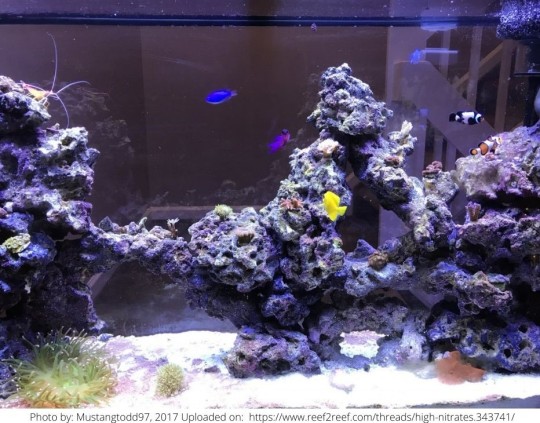
What do you mean she’s not in the tank? She must’ve escaped!

Photo from Health and Safety Authority 2020

gif link: https://tenor.com/search/octopus-gifs
Oh, here she is! Octopie sometimes enjoys a good stroll around the neighborhood as you can see. She just needs a small fetch to get back to her place.

Photo from ET Bureau 2018
Classification of the Octopus vulgaris
Kingdom: Animalia
Subkingdom: Bilateria
Infrakingdom: Protostomia
Superphylum: Lophozoa
Phylum: Mollusca
Class: Cephalopoda
Subclass: Coleoidea
Superorder: Octobranchia
Order: Octopoda
Suborder: Incirrina
Family: Octopodidae
Subfamily: Octopodinae
Genus: Octopus
Species: Octopus vulgaris (Cuvier 1797)- Common Octopus (ITIS 2020)
Where do these guys live?
Just like Ursula, the Octopus vulgaris reside at the surface and depths of 100-150 meters in tropical, subtropical, temperate regions living in the benthic, reef, and coastal biomes. Mostly they have a worldwide distribution. However, they are native to the Indian, Atlantic, and Pacific ocean but also abundant in the Mediterranean Sea, Eastern Atlantic Ocean, and the Japanese water (Case 1999).

Photo from Aquamaps
Common Octopus: What’s with the Bod?
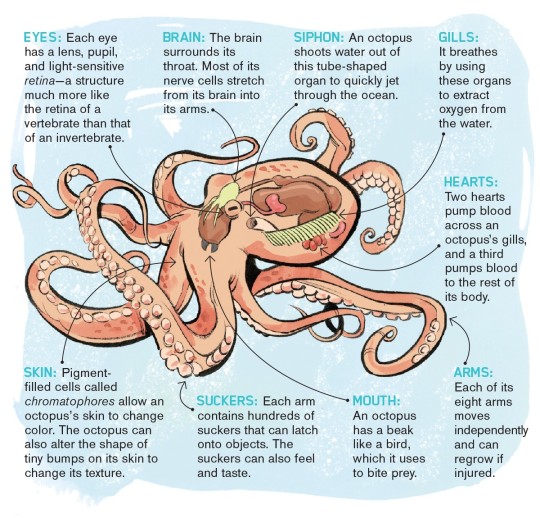
Octopus Anatomy Diagram (Anatomy Note)
They have 8 long arms where the underside of it has 2 rows of ring-shaped suction cups for grasping which can be compared with our fingers. On average each tentacle has 240 suction cups, it turns out that octopus has 1800 fingers on the 8 hands (Notord 2017). Wow, that means it can slap you eight times! Not to mention, the row of mark of suckers it’ll leave behind. Ouch!
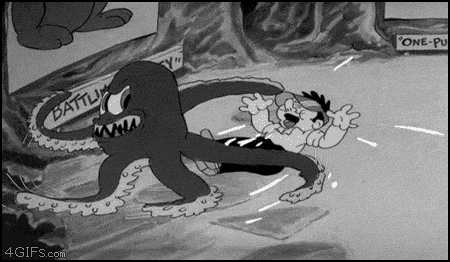
They have 3 hearts and blue blood. Two pump blood through each of the two gills, while the third pumps blood through the body. Interestingly, the head and associated sensory organs of an octopus are well developed. In this species, its head and eyes are the key characteristics of the organism. The vertical lobe of the brain of this octopus involves it to have sophisticated behaviors and learning memory systems.
The study by Bryne et. al (2014) shows that the O. vulgaris have a lateral preference on its either left or right eye in monocular vision. Their eyes are similar to the human eyes with a cornea, iris, lens, virtuous region, retina, optic nerve, and ganglion but it lacks a blind spot (WordPress 2014).
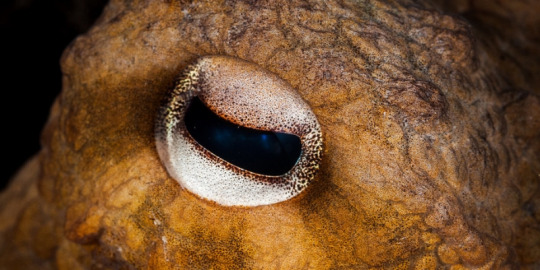
Photo from Octolab 2019
It is because of their intelligence and extraordinary suckers that makes octopus not exactly the best organism to keep as pet. They often escape their aquariums! It also doesn’t help that some of them are capable of “walking”.

youtube
Check out this video of an octopus dissection and examination of its anatomy!
youtube
Wheel of Life: Octopus saga
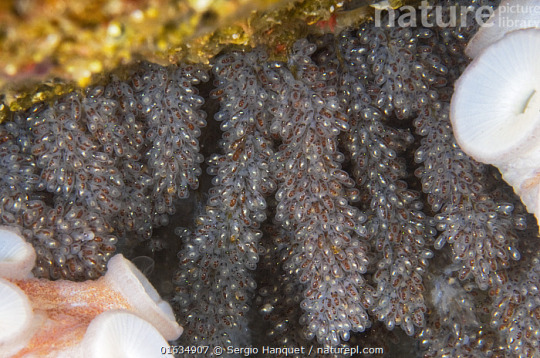
The common octopus has individuals of both sexes. The male approaches the female octopus, who fends off from him then accepts him later on. He will pass his spermatophores to her by inserting his hectocotylus, a modified arm, in her mantle cavity; for several hours for a week or so both of them will copulate.
The common octopus are oviparous and can lay 100,000-500,000 grain-like eggs in shallow water and attach them to a substrate. Common octopuses show parental care for their eggs where they rarely leave their eggs and do not eat for 4-5 months. Their planktonic stage can last for 60 days, and 30 days for their settlement. (Case 1999; MarineBio c1998-2020).
Octopus Copulating
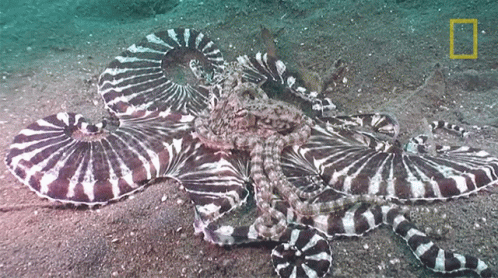
youtube
Eggs Hatching

Watch the final act of a mother octopus protecting her eggs which will surely stir your emotions
youtube
Into the Unknown: Octopus and its Environment
The common octopus is able to adapt to the different habitats where they can hide by their camouflage; these octopus are able to conceal themselves in order for them to protect themselves and to feed by contracting and expanding their specialized cells called chromatophores. They are nocturnal animals and tend to be solitary and territorial but still interact with other octopus at times. O. vulgaris are known to be active predators feeding on gastropods and bivalves.
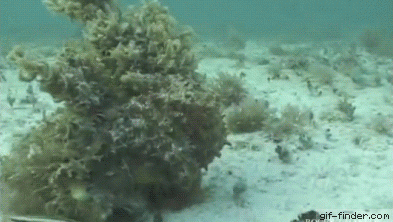
Relationship with Humans
Have you ever eaten an octopus? If yes, then you might already have an idea as to how our relationship is with octopuses. Let’s take a tour of the different parts of the world and have a sneak peek on how they prepare octopus to become a delicious meal.
Octopus inspires chefs to be creative
The consumption of octopus has been widely distributed throughout the globe, deeming chefs to be inspired by them. In Korea, octopus are eaten raw and alive while in Japan, they are prepared with flour and mixtures to create the famous takoyaki. In Puerto Rico, a known octopus delicacy called Octopus carpaccio is served. Other countries such as Los Angeles and Chicago are also equipped with their octopus dish.

Takeaway Takoyaki (by Su-Lin)
Check out this video of a popular way of eating octopus in Korea
youtube
Giving an Arm to the Economy

Photo by Rory Hyde 2008
In the Philippines, octopus are landed by small-scale opportunistic fishers that will bring any valuable catch to local middlemen (buying stations) that trade an assorted array of species for export purposes. Only a small number of processing plants in the Philippines process and export octopus. All octopus from the Philippines is exported frozen and no other, more detailed figures are available. Figures indicate that around 5,857 MT was exported in 2017, with an estimated value of 24,9 million US$.(Seafood Tip, 2020)
At a global scale, China, Morocco, Mauritania, Spain and Vietnam are the main exporters of octopus. Global imports of octopus totaled an average of US$ 1.6 billion dollars per year between 2009 and 2013. Major markets are centered in Asia and Europe, particularly Japan, South Korea, Italy and Spain.
The global appetite for octopus is growing, how about its number in the ocean?
Global octopus catch peaked at almost 380,000 tonnes in 2007, and has since declined by a tenth to 335,865 tonnes in 2012.
Didn’t see that one coming...
1. Sex is a Death Sentence.
As with most creatures, the octopus's main purpose in life is to reproduce. However, if it knew just what was waiting for it soon after, it might think twice. Both the male and female octopuses die soon after mating. The male dies a few months afterward or sometimes after mating as it gets eaten or strangled by the female octopus, while the female dies shortly after the eggs hatch due to exhaustion and hunger from taking care of their young.

2. Octopus Prime! Transformer Edition!
Octopuses are the first invertebrates to be seen using tools. Here is an octopus hiding in a coconut shell. Funny how they underwent evolution by disregarding their shells completely and then resorting to tools for protection. But wait! Octopus may have lost their shells but this means they could fit into anything that is bigger than their beak.
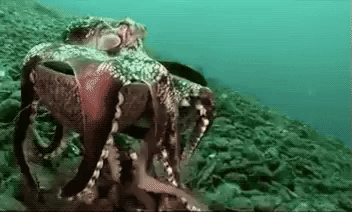


4. Let it grow!!
If a tentacle is amputated for any reason, the octopus is able to regenerate the limb. This is similar to other marine creatures such as the starfish.

5. We have outlived you Little foot.
Octopus were existent since the Carboniferous making them waaaaay older than dinosaurs and date back a whopping 296 million years.

6. Colorblind but not really
While the eyes of octopus suggested a convergent evolution with those of humans in terms of their structural parts, they are colorblind. They have only one type of receptor which makes them incapable of colored vision but it is their bizarre shaped eyes that allows light to enter in may directions, creating blurred images - an effect called chromatic aberration.
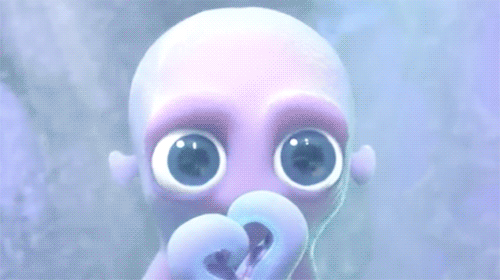
7. Hey, daydreamer!
Experiments on octopuses have revealed that they are able to change their camouflage during sleep. Whether they were dreaming or not is still a mystery to a lot of scientists.
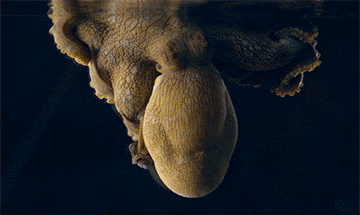
And that’s all about Octopie and some of her friends.
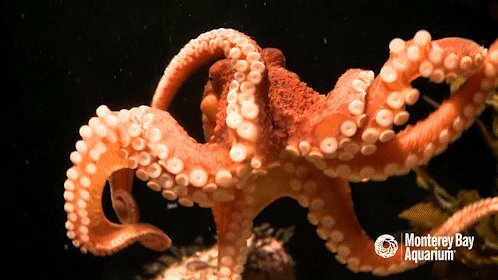
Ugh finally, Octopie is now back to her home!
References
Bradford, A. (2017). Octopus Facts. Live Science. Retrieved 2020 October 6 from:https://www.livescience.com/55478-octopus-facts.html#:~:text=The%20common%20octopus%20(Octopus%20vulgaris,and%20weight%20around%20110%20lbs.
Case, R. (1999). "Octopus vulgaris". Animal Diversity Web. Retrieved 2020 October 5 from:https://animaldiversity.org/accounts/Octopus_vulgaris/
ITIS (Integrated Taxonomic Information System). (2020). Octopus vulgaris (Cuvier 1797). Retrieved 2020 October 6 from:https://www.itis.gov/servlet/SingleRpt/SingleRpt?search_topic=TSN&search_value=82603#null
MarineBio. (c1998-2020). Common Octopuses, Octopus vulgaris. Retrieved 2020 October 6 from ,for%20up%20to%201.5%20years.
Notord. (2017). Octopus: The Cursed Genius of the Ocean. Retrieved 2020 October 10 from: https://steemit.com/science/@natord/octopus-the-cursed-genius-of-the-ocean
WordPress. (2014). Anatomy. Retrieved 2020 October 6 from :https://cephalopods2014.wordpress.com/anatomy/
Seafood Tip. (2020). Octopus in the Philippines. Retrieved 2020 October 6 from https://seafood-tip.com/sourcing-intelligence/countries/philippines/octopus/
Octopus Anatomy Diagram, (n.d.). [image]. Anatomy Note Web site. Retrieved 202 October 6 from https://www.anatomynote.com/animal-anatomy/marine-animal-anatomy/octopus/octopus-anatomy-diagram/
Su-Lin. (2018). Takeaway takoyaki. [image]. Flickr Web site. Retrieved 2020 October 6 from https://www.flickr.com/photos/15157510@N00/2308993346
Saelinger, T. (2013). Octopus carpaccio. [image]. Today Web site. Retrieved 202 October 6 from https://www.today.com/food/abundance-octopus-inspires-chefs-get-creative-6C10185385
Saelinger, T. (2013). Fideo with octopus and kielbasa. [image]. Today Web site. Retrieved 2020 October 6 from https://www.today.com/food/abundance-octopus-inspires-chefs-get-creative-6C10185385
Saelinger, T. (2013). Charred octopus. [image]. Today Web site. Retrieved 2020 October 6 from https://www.today.com/food/abundance-octopus-inspires-chefs-get-creative-6C10185385
Octopus. (2019). [image]. Vietnam News Web site. Retrieved 2020 October 6 from https://vietnamnews.vn/economy/484737/s-korea-largest-export-market-for-vietnamese-squid-and-octopus.html
Steene, R. (2013). Octopus hiding in a coconut shell. [image]. Live Science Web site. Retrieved 2020 October 6 from https://www.livescience.com/41924-smart-octopus-facts.html
Octopus hiding in a shell. (2019). [image]. Thoughtco Web site. Retrieved 2020 October 6 from https://www.thoughtco.com/fascinating-octopus-facts-4064726#:~:text=If%20the%20invertebrate%20structure%20has%20suckers%20along%20its,cuttlefishand%20squids%2C%20have%20eight%20arms%20and%20two%20tentacles.
4 notes
·
View notes
Text
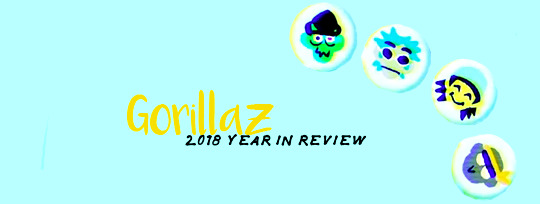
It’s that time of year again! I, and possibly a good number of you reading this, just spent the whole of 2018 in the Gorillaz fandom. Congratulations! You made it! Because this year...kinda sucked. Not just for the Gorillaz fandom but, if this Washington Post article is any indication, for the rest of the world too. Maybe on an individual level there were moments of light. Maybe Gorillaz was your moment of light. If it was I’m genuinely happy because that means you probably found a way to avoid or ignore all the chaos that went down this year. But overall? Fandom was rife with disappointments, confusion and conflict with some good parts (for me, at least) sprinkled in here and there. Below is a personal reflection on the top 10 significant events in fandom of 2018.
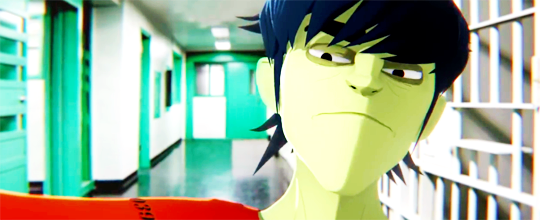
1. Murdoc Goes to Prison
2018 started out peacefully for fandom. We were just finishing up sharing our scans of G-Magazine and theorizing over the next album when we’re treated with this - a nineteen second mocap of a frantic Murdoc accepting a Brit Award with an “oh by the way I’m going to prison.” We didn’t know why or for how long, and, though fans were confused and Murdoc going to prison is a tired, overplayed storyline at this point, it was cherished as any new Gorillaz content, especially animation, is cherished. Memes were made, most notably the #FreeMurdoc hashtag complete with a petition which was acknowledged by creators and caused the first big outburst in fandom for its messy tag. I did what I always do with Murdoc videos and went through the entire thing frame by frame to collect screenshots. Little did I know that this would be the only time I would get to indulge in this beloved past time. Little did I know that I would be wearing the same expression as Murdoc is in this screencap this entire phase.

2. Murdoc hate
Murdoc hate has always existed. It’s also generally accepted. However, when it was confirmed that Murdoc was going to be in prison for an undetermined amount of time and that he may not even speak this phase (thanks a lot, phase 5 plot!) it reached unprecedented levels of viciousness. Some fans took every opportunity to drag him in the main tag, start debates with anyone who might mention one positive thing about him and expressed how they genuinely wanted him to die and/or never come back. It kinda reminded me of this season of MTV’s The Challenge when everyone ganged up on Johnny Bananas. Like, yes he’s an asshole and yes this was probably long overdue but also omg when is there and end point? Is there an end point? It was like some people hated Murdoc more than they liked Gorillaz. For some additional context - this tense environment was born out of an astoundingly severe conflict that happened in spring where three separate fandom storms that had been brewing since late 2017 collided into one huge mess. Discords were raided, friendships were lost, the police were called (I’m not even exaggerating). I won’t go into it more but if you were there, you know what i’m talking about. Murdoc wasn’t the cause of this, but his character was at the center of one of those storms and the canon sending him to prison only reignited the ire towards him. For awhile Murdoc fans weren’t sure were exactly they stood with the greater fandom, and new fans were confused as to why this one green character was the source of so much grief for haters and fans alike. This continued for most of the year (and still continues today), hence why it’s getting a mention now.

3. Ace
Believe it or not Murdoc and Ace are confirmed #friends. You wouldn’t know that from all the Murdoc vs Ace content that sprung out of this year but Ace was the one who joined Murdoc for hot chocolate after he got out of prison, “they go way back” etc etc. Ace was a big deal because it was probably the only time the fandom guessed something correctly this entire year. Jamie began posting cryptic pictures of Noodle with this unidentified man, then another with only the Ace card visible. “It a Powerpuff Girls crossover!�� Some people claimed. But that seemed so random? Really? A B-list cartoon villain from a cartoon targeting an entirely different demographic? More likely than you think! Ace never spoke a word and he wasn’t allowed to smoke or have sex. People obsessed over him anyways. To this day I still have no idea who he is or what kind of personality he has or really anything. But he wasn’t a bad guy (more on that later) and he was Murdoc’s friend so he’s alright with me.

4. Messaging Denholm
By now the fandom was fraught with distress on so many levels. We were lost. We needed someone to guide us, to show us the way, to show us the #truth. I don’t know exactly who started this trend but it soon spread around Reddit and other social media sites that Jamie’s son Denholm was replying to dm’s on Instagram and soon, he was graced with a deluge of of inquiries from casual fans and Murdoc stans alike. The thing is though - he actually *did* answer them. Many of us had spoilers re: Murdoc and Ace’s friendship, Murdoc getting out of prison, etc. MONTHS before they happened. I believe he even told us that 2D was fine back in like, June or something. Denholm knew! Eventually we pissed him off but it didn’t stop him from answering. He just answered angrier. It also caused fans to argue more because people started accusing others of photoshopping his responses and nothing can ever be done peacefully here. I haven’t followed up on this story singe the end of summer but I think fans have finally scaled back on the messaging. But I hear he’s working on a Gorillaz documentary for 2019 so...I’m sure we’ll be talking again soon.
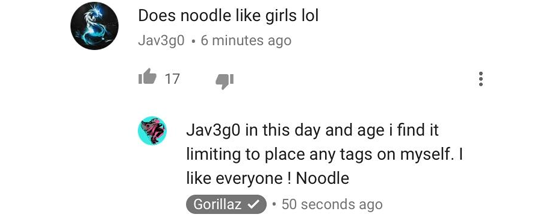
5. Noodle
I want to take a moment here to also acknowledge the struggle AMA Gorillaz hosted on, of all places, Youtube. Thankfully, diligent redditors compiled a google doc of all the answers otherwise they would lost thanks to Youtube’s confusing interface. ANYHOW. The answer that stirred up the biggest milieu of debate and confusion came from Noodle. This isn’t exactly my lane - I don’t wade into Noodle issues and I don’t id as part of the LGBT community - so I’m not going to say much here other than, at the very least, this was the second or third time she has officially denied any interest in dating her bandmates.
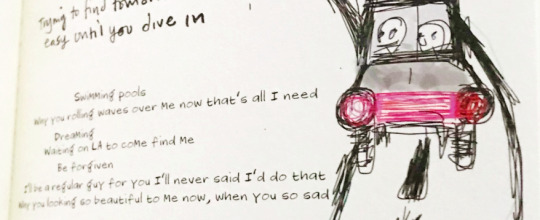
6. 2D’s journal/2Doc
Okay first of all: 2DOC...jk, jk...jk? But no, honestly, this actually did become a big story this year, much bigger than expected. The release of 2D’s journal was the catalyst here, revealing a number of drawings and images of Murdoc. “Souk Eye,” a song that came with visuals featuring close ups of Murdoc’s face and vaguely romantic lyrics was depicted in 2D’s journal next to yet another drawing of Murdoc. We were confused! 2D didn’t care that Murdoc was gone, right? 2Doc shippers were intrigued. I was hesitant. We were all called delusional. However, “Souk Eye” was later confirmed to be a love song by Damon Albarn, and Murdoc and 2D have both claimed their relationship is “better” since the end of phase 5 (hhMmMmM). Obvi, take this with a grain of salt because it’s Gorillaz but the journal was instrumental in confirming how closely The Now Now (and the entire plot of phase 5, really) was tied to Murdoc and 2D’s relationship, particularly what 2D thinks of Murdoc. Think of it as platonic if you want but they share a closeness on SOME level and the content of 2018, from interviews to the Murdoc chats to the album itself, supports this. I rest my case.
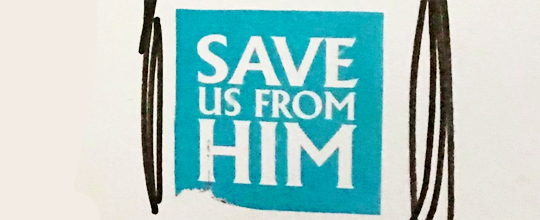
7. Lost theories
Pour one out for all the lost theories. If you were a new fan this year you probably came up with a theory, or you got really invested in a theory. Some examples: HIM from PPG orchestrating the destruction of Gorillaz by possessing 2D and getting Murdoc framed with Ace as a double agent, or Murdoc’s imprisonment being tied to his trouble with EMI from phase 4, or phase 5 being about time travel, or Murdoc crashing Demon Dayz fest and fighting El Mierda on stage, or 2D being the one to frame Murdoc or Murdoc’s inmate number (24602) being a Les Mis reference implying that he’d get a character arc similar to Jean Valjean...you get the idea. But there are dreams that cannot beeee, and there are storms we cannot weather. You can argue about the budget or G-Shock or whatever but the truth is Gorillaz is just disorganized. This is their Brand™.
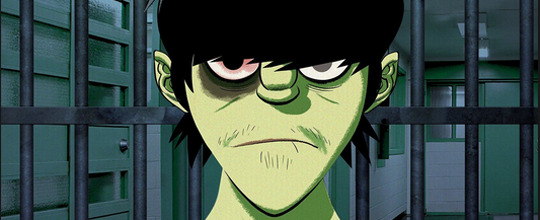
8. The Murdoc Chatbot
Gorillaz did an interesting thing this year - it let us talk to Murdoc! Sometime around June, he writers decided that the plot of phase 5 would be best spent, not on exploring the band’s dynamic with Murdoc gone or developing Ace’s personality, but on Murdoc! Fandom spent most of the summer following Murdoc’s experience in prison and helping to “free” him via a chatbot you could access through Kik, Instagram or Facebook. Basically, Murdoc was Paddington from Paddington 2, and we the fans were supposed to be the Browns trying to break him out and prove his innocence. Other fans begrudgingly used the chatbot to make fun of him or tell him to die and follow along with the story (it was the only place you could get plot updates). It was a neat idea as well as a funny experience to pretend to be talking to him, and the plot was very engaging at times. It was the chatbot that revealed the very dissatisfying (albeit happy) conclusion that Murdoc is no Paddington and had lied about everything - being framed, El Mierda etc. - but felt really bad about it. His apology was basically this. I’m going to also tag the #FreeMurdoc merchandise debacle, how overpriced it was and how it ended up being pointless anyways because Murdoc wasn’t framed and didn’t need to be “freed” onto this, because it all falls under the same event. Oh, and you got to talk to Noodle sometimes, too.
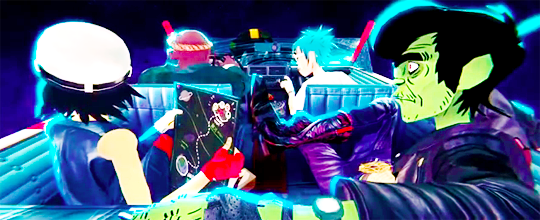
9. G-shock ends phase 5
I put “ends phase 5″ in strikethrough because G-Shock on its own is actually pretty cool, and made up for the lack of videos (2 in total) that were released this year. The now Murdoc inclusive band goes to space and starts an alien war! That’s fun! Completely removed from whatever phase 5 was, but fun! (And I say that genuinely) What was messy about G-shock was that it came out of nowhere. The final Murdoc chat, that was SUPPOSED to reveal the ending to the prison arc, hadn’t even happened but suddenly, Murdoc was back to sell watches to aliens with the rest of the band and Ace was gone. But the final chat was delayed by a month and G-Shock came out anyways. Out of this came memes about how phase 5 ended so Gorillaz could try to sell us watches.
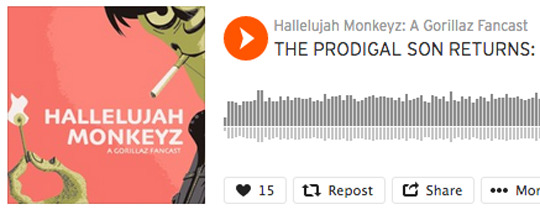
10. Cass Browne Tells us the True Plastic Beach Ending
We ended 2018 with not one but two major interviews from the fancast, Hallelujah Monkeyz but I’m choosing to cover their latest interview with Cass Browne, writer of Rise of the Ogre. If you were new this year you probably heard older fans mention ad nauseam how much they missed this guy name Cass. Well, Cass came back and dropped actual bombs about the true ending of phase 3, Murdoc’s lost backstory and the Plastic Beach book he found AND that a sequel to ROTO was planned and dropped. Understandably, this sparked a lot of discussion and also revealed just how important Cass was to the continuity of the Gorillaz storyline. Back then, we had ROTO and Plastic Beach. Today, we have “Murdoc drowns in poop and reunites with the band offscreen”
And that’s the year! And look I’m not saying this because I’m a stan but this was a Murdoc year. He was at the center of like, at least 80% of the angst and joy of fandom and I could make separate “top 10 Murdoc moments” or “top 10 2Doc moments.” I guess for me, on an individual level, it was an alright year. For one, I actually talked to more people this year and met some really great friends (something I don’t typically do in fandom). I also get to check “write a fanfic” off my bucket list (it’s still a WIP but it’s the first WIP I’ve ever had so I’m counting it). And personally, my life has changed and without getting into too many details I’ve overcome a lot, grown professionally and...I think I can be kinda proud of myself for that. I expect 2019 to be a slower year than this one, and, I think the fandom needs that. Hopefully I’ll still see some of you around because I’m going to be here for at least the next few months while I finish up you know what.
Honorable mentions: 2D “Dies” of Ligma and other 2D memes, 2D writes The Now Now, Benjamin Clementine says he regrets working with Gorillaz, Noodles old VA confirms Jamie ghosted her and recast Noodle without telling her, Gorillaz delay the final Murdoc chat by a month, Demon Dayz doesn’t get streamed, Music video releases - “Humilty” and “Tranz”, Cyborg Noodle returns with boobs and causes debate, the “Let Ace Speak” petition,
#endofyear#long post /#there's a 2doc mention in here just fyi if you want to avoid#not as organized as last year's that's for sure#but here it is!#again this is more for my records and tradition but also here to read if you want
141 notes
·
View notes
Text
A couple of months ago, after finishing COUNTER/Weight, I spent about a week in a total hangover, relistening to scenes and having feelings. I took some notes, but procrastinated posting them, and then finally got distracted. But, a) I hate leaving things I intended for tumblr unposted, even if they have value only for me, and b) I also hate posting things out of order, and there's a big TM liveblog incoming. So, here's a bunch of really random thoughts about C/w from past me.
The gnosis virus did go nowhere huh. I was hopeful for a minute when one of the finale intros mentioned it, but that was it. What was the purpose of that arc even. [Note from present me: Lol. At least I feel better about this one!]
Oh, and the patch AuDy left never reappeared either. And the idea from the faction game that Aria's images owned by EarthHome/Petrichor transmit Rigour code… That's the flip side of the coin. On the one hand, it's really cool to see the creative process – on the other, it sometimes feels like you're listening to people write a script for the tv show, but only get to see a half of the finished product. It's fascinating to see the universe grow organically and the players to come up with new ideas and get excited about them – but that means numerous retcons, some of them not even presented as such, because the creators forgot what the previous revision was or didn't thought it was important. It's a unique feature of the medium that player choice directs the narrative and it's not bound by railroading – but that means some roads lead nowhere, and some branches dry and fall off.
It's a bit harder to make peace with something that could have easily been developed more within the existing plot of the show. How come there's a player character whose consciousness consists of three different people in various combinations, but nobody seems to be curious how that works? No PC or NPC ever asked “Which one of you is speaking right now?” or something. The final episodes made a lot of things clearer, but it still felt too little, too late. Hard not to be reminded of that gripe about certain two characters sharing one character sheet one of whom was left underdeveloped and half-forgotten… Both are very ambitious concepts that require a double amount of work from the player, so I feel bad complaining they weren't realized to full potential, but…
Speaking of L&D… I still want to know how the hell did that one engineer all by herself design 4 gods, one of which became a basis for technology that was advanced even for the civilizations 80,000 years later? This woman singlehandedly surpassed any technological achievement of humanity before and after. Who Is She
I saw a “Wake me up: before you go go / when september ends / wake me up inside” meme and thought “heh, this sounds relevant, which member of the Chime is which?” and it already made me sad, but then I realized that I'd never actually heard the september song and looked it up and. The lyrics fit so well. What the fuck. It's an old song everyone keeps joking about. Why is it appropriate for a legitimate fanmix. What. I guess the word “September” will never be the same again for me.
I looked up the rules for Firebrands, the game used for the finale. Oh my, challenges for the dance minigame are so overtly romantic when you see them in a list together! Imagine this cast of characters having to answer to “do you place your hand upon my elbow, shoulder, waist, or hip?” lmao. Also I didn't realize “May I?” was part of the rules for “stealing time together”. (And I found out there's a party version of that minigame with bug-themed challenges. I might have dug too deep…) "Tactical skirmish" is a really fascinating concept, I've never seen such a masochistic combat system! Really faces the player with the violence they're inflicting: sure, you can always fight on, but are you ready to live with what you'll have to do? But for it to work fully, you need a lot of non-expendable NPCs on both sides. The one with the most likeable team wins! (Like Mako did.)
I'm relistening to Three Conversations and it's pretty interesting that Ibex has a bunch perfectly lifelike android bodies, right? There is no such technology seen anywhere else. Did Righteousness develop and privatize that? Are they so complex that only a Divine would have enough computing power to successfully mimic organic life? Can Aria convince Righteousness to help her perform on stage without leaving her duties? Also, like with AuDy, I wonder how Ibex & Righteousness' consciousness works. Is it a single mind, spread across every body he has, or even anything Righteousness is running on, having a bunch of different conversations at once if he needs to? Or is the original Ibex just gone, and what's left is a personality imprint hanging on to the connection to his still living body, imitating his former self like the automated recording Cass saw wore his face? In other words, has Ibex completely fused with Righteousness, or assimilated and destroyed by it? Does he not exist anymore as an independent singular being, or does he not exist at all? Most info indicates the former, but there was also “You’re not in there anymore” “No”.
If Orth and Jace are anime fans with their Kingdom Come and Panther, then Ibex is the guy who's way too into dinosaurs or paleontology. It's as if the heads of various confessions were called Triceratops, Stegosaurus etc. and only one of them knows wtf that means, and also he compares his Divine to… Were there scavenging dinosaurs? I'm looking at an article that suggests T. Rex might have been a scavenger, so yeah he would compare Righteousness to a goddamn T. Rex.
Hey what do you think is the most thematically aproppriate part of the Hieron anime for Orth to watch alone at night during the Kingdom game. What's the best thematic parallel for when he turns off the episode and thinks he made a mistake. Do you think that he once, after a long day and a long month and maybe a long year of feeling helpless and doomed, sits down for a distraction but ends up sobbing “How could they let this happen to Mother Glory”
On Joypark, there are definitely statues of Eidolons, ancient and holy, that were repainted and repurposed as Hieron deities. Imagine a giant Greek or Roman style marble statue of Apote – and it’s painted over as Samot, with an anime face and in really bright plain colors like these “reconstructions of original coloring” that actually only use base colors so they look like cheap action figures.
I was reading Austin's top ten games of 2016 list on Waypoint and he gave first place to The Sprawl! Aww!
The Downloads folder in my phone gallery is funny bc it mostly consists of every freely available f@tt map and also that one photo of Tristan Walker (because I tried to redraw it, very unsuccessfully). I go check a map and every time am met by Ibex just. staring at me. It's unsettling
Some of the many options for how Apostolosian gender could have been presented:
Apostolosians prefer to be addressed by the most neutral available human pronoun, represented as "they" in English, because the human languages don't have anything close enough
Apostolosian pronouns are represented in English by a set of real-life common pronouns and neopronouns
There's a list of Apostolosian pronouns and they're just used in English verbatim (Really impractical because the players need a cheat sheet, but the most fair)
Humans apply human genders to Apostolosians. Apostolosians may be offended, may find it convenient, or something else
As Austin said in the post-mortem, the Eidolon system is not gender. It's represented in English by titles/honorifics/etc
Any of the above, and the creators are aware of the difference between personal pronouns, grammatical gender, and social gender
And that’s not even touching the core problem of what the concept of gender in a futuristic, techonologically advanced society would look like. Yes, I'm complaining about this for the third time but I'm just. So tired of native English speakers' takes on gendered language. They could have made Apostolosian gender look like anything and they made it look like that fucking mess... God, I really hope TM is good enough to make me forget and forgive the experience of listening to “he... sorry, they” for 100 hours. [Note from present me: Well… mostly]
Here’s my take on this: eidolons in Apostolosian language are absurdly broad noun classes with associated classifiers (which fits both the idea that they’re gender but not actually, and that each of them is a patron to several unrelated aspects of life) Apostolosian: the word “(Apo)thesa” is used to refer to people who follow the corresponding eidolon, as well as for counting buildings, heavy machinery, military units, specific strategies and tactics, log entries, historical documents and chronicles, history textbooks and monographs, and eras :) Human: what the fuck
Very critical, imaginative worldbuilding in which 80,000+ years into the future humanity somehow has 21st century gender and 21st century capitalism! TBH, I find any sci-fi set in the far future inherently silly – we can’t really imagine the future technogy and its effect on society. But it feels like C/w barely even tried, and to hear it boast about “critical worldbuilding” is kinda strange. I assumed that meant they build the world critically, not that they recreate modern society or some aspect of it and criticize that! It’s just another Star Trek then! And it was already clear right during the setup when they said “We don’t want Star Trek aliens” and immediately created Apostolosians.
I haven't seen a single piece of fanart with Taako and Mako. Come on, does nobody want to see these two next to each other! Especially considering the outfits artists like to put Taako in!
I really don't understand how and why people do fandom activities on Twitter and Discord where the creators also have accounts. It gives me so much secondhand embarrassment. I can barely peek at Twitter posts before running away. Old-fashioned opinion apparently but I strongly believe the main fandom space and the interaction-with-original-creators space should be separate. I need a space where I can voice my opinions, especially negative ones, with complete freedom. I need to be able to say exactly what's on my mind. But I wouldn't want any of the people on the podcast to read something unfiltered like my complaints above. Being in the same space as the source content creators obliges any decent person to be diplomatic and constructive. And the creators, in turn, need a space where they don't come across complete randos yelling at them about something they said in a podcast three years ago. I'm already feeling uncomfortable because hearing to strangers pour their hearts out for hundreds of hours gives me way too much insight on who they are as people. Of course, nothing’s stopping them from lurking on Tumblr or AO3 and even reading this very post, but a platform where they have official accounts is still a different thing! I even feel uncomfortable talking about the podcast creators using their first names so much. To my ear, referring to a total stranger by first name, especially if it's a shortened form, sounds so rude! I'm not their friend, I don't have that right! But, of course, writing something like “Mr Walker” in my liveblogs would have been even weirder, nobody does that...
Is it a common experience to not even think about fanfiction after listening to Hieron, but going straight to AO3 after C/w? I feel like since Hieron is still a work in progress, writing/reading about it is stepping on the GM&players' toes, and C/w is finished so it's like they gave us the keys to the playground, it's the fandom's turn now. This story has so much blanks and they must be filled! In one of the early episodes they joked that something cute they said would encourage people to ship Mako/Cass and I was like "Bold of you to assume they aren't already" and, indeed, I was right and it's the most popular C/w ship on AO3. Too bad I’m so indifferent to it…
It’s a shame we never had a full scene with Ariadne or even learned what they were up to during the finale.
I still don't understand how Ibex went from “evil CEO” to “leader of a proletarian revolution”, these sound like completely opposite concepts to me
I probably have talked about this too much and have pretty much given up on ever getting a clear picture due to all of these reimaginings but… Righteousness and Voice… Ibex takes Righteousness out of Mako but he still has Voice, that was pretty much openly stated, correct? So how does that work? I’m guessing Righteousness is hidden somewhere in Voice’s code. But if so:
Did Maryland know? On the one hand, she’s too competent not to. On the other, why would she ever allow or accept that?
How did Righteousness not get corrupted by Rigour too? Maybe it did, but broke off the connection with the rest of itself to contain the damage? Or maybe, on the contrary, it kept in contact and was sending intel to Ibex the whole time? But in that case he would have provided more help in the finale.
4 notes
·
View notes
Note
Ooo another one: Athena and to some extent, V
(For context, this is about this character Q&A challenge thing that I reblogged back when series 3 was airing!)
WOW OKAY so I was just thinking to myself that it was weird that I couldn’t remember what I’d written about V for this, because I wanted to compare if I still felt the same about her after the finale episode, and Lo and behold (haha, see what I did there) I find that I actually never finished answering, which is why I couldn’t remember what I’d said!
(I know, I know, reading that was tiring, but imagine having to BE me)
Looking back now it’s super unfortunate that I didn’t write the V section when this ask first came in, because it would have been an interesting comparison… but I think I was felled by not having much V content to go on, before 3.8, whereas now I can talk at much more length!
I had, however, finished the Athena section, so here you go, this is what I had already in the draft:
First, Athena:
• Do I like them? Yes, she’s a brilliant character!
• 5 good qualities: She’s SO SMART, oh my life, major brain crush. She uses her intelligence in a way she considers ‘pure’, despite the more lucrative options that are open to her, so she has a strong moral code in a climate ruled by selfish gain. She’s motivated by her love for her daughter, which defies all odds and succeeds in pioneering an entirely new scientific field - what an icon! She takes crap from exactly NOBODY and is sassy as hell in the process. And she’s willing to help Karen, for which she’ll always have a special place in my heart.
• 3 bad qualities: She wasn’t exactly quick to accept synth consciousness, umm, so she killed a bunch of them pretty callously. Like Ed, she was able to convince herself they weren’t really people long enough to serve her own purposes, so that’s… I’m less keen on that. Umm.. she can be a little brusque, I didn’t particularly like her scene with poor Helen Aveling, who was another lady in science trying her best! No need to put her down! I guess from a narrative perspective, I could say that Athena is a little superfluous, especially since she doesn’t seem to be coming back. We’ll count that! Lots of her harder, colder edges are due to her grief so I can’t really find it in me to pin them as ‘bad’. Have I mentioned, this show does amazingly with its characters, particularly its women?!
• Favourite episode: 2.8 was the goodbye to V, right? Ugh, heartbreaking.
• OTP: … this is kind of out of the blue but I could see her and Laura, mayhaps? Certainly there aren’t any human men left alive in the show who could hold a candle to her. Oh, but how interesting if she and Neil Sommer had dated in the past. Heh heh heh.
• BrOTP: Well, I’m so glad that she’s got Karen’s brain scans, so that she can recreate her perfectly and they can love and support one another!
• OT3: Athena & V & a weekly lunch date where V shows up on her tablet screen and checks in with what she’s been doing/how many synths she’s resurrected in her Mind Meadow.
• NOTP: Athena and her kind of boring husband, what was his name? One of those unisex names? I want it to begin with L? Oh well.
• Best quote: “Nothing really bad has ever happened to you, has it? Because when it does, you don’t need reminders about your insignificance to the universe.” I’m quoting from memory so it might not be the exact wording. Amazing line, anyway.
• Head canon: I like to think that Athena did, in fact, have something to do with Leo’s early treatment. I mean, Max isn’t even with him when it happens, so at some point the Elster sibs must have pooled resources and talked about what was going to happen with him. (They probably moped about their literal surgeon brother not being there too). Anyway, somehow they found Athena and she did some salvaging (having also recently practiced with Pete when she uploaded his consciousness, pending upload to a new body) and later handed over to Anatole. Basically my headcanon is that nobody has really died in this show since Athena and V were introduced. Athena knows how to save human minds and V can grab the synths. Sorted.
Now V! The only one I had previously answered was this:
• Do I like them? Yes, bless her digital cotton socks!
Although now I might slightly rephrase that in favour of:
•Do I like them? I think so! But in the words of George Millican, she worries me! Moving on to the rest of the questions…..
• 5 good qualities: She cares about others, and is benevolent towards the synths even though she is a separate species in and of herself, with a less defined concept of “them” and “us”. Where she can, she acts to relieve suffering (giving Odi the rest he wanted, even if we’d rather she hadn’t). She’s resourceful. She’s developing/has developed a strong sense of herself and her chosen role, which is lovely to see as growth since her confusion in series 2. Aaaand, she recognises Niska’s worth and potential (even if… well, see next part).
• 3 bad qualities: She’s not too bothered about Niska’s personal agency, and would rather focus on convincing her to carry out her will. Speaking of her will, she does seem to think her way and ONLY her way is the right way for both organic and synthetic humanity - and while she might be the best disposed to predict future events, having access to the entire world’s knowledge etc…. that still doesn’t make her Actually Omniscient, I’m sorry. Whatever she thinks. And for a third, hmm, maybe she was a little harsh to leave her mother all of a sudden, but for all we know they’re back in contact now?
• Favourite episode: whichever one it was in series 2 where she starts to piece together who she was but refers to Ginny as ‘she’ rather than ‘I’ - that was so powerful and chilling.
• OTP: I’ve never thought about an OTP for V, ha. Hmm, not in the romantic sense, but I think she and Niska COULD be a winning combination, if nothing goes to awry in s4, but I am on standby for Niska having to stand against her at some point and take her down in some epic, badass way. ALTERNATIVELY, can V make Q properly conscious, and we can see what on earth a ship between 2 non-corporeal AI characters looks like? Or rather, doesn’t look like?
• BrOTP: Supposing that V stays nice, I would like her and Astrid to bond about how much they value Niska, possibly for Astrid to give V a talking to about straight up manipulating her, but in general for them to team up in making sure Niska is taking care of herself during her difficult reign as Queen Indigo.
• OT3: Well, Niska and Astrid and V, I suppose, given my last two replies!
• NOTP: That creepy dude with eyes on his eyelids can stay far away from the Synth Who Sleeps that he’s so obsessed with, thank you!
• Best quote: Listen, I will NEVER not get chills about “Why did you ask me to lie to him?” Every time I hear that line, I am there in the auditorium watching the extended trailer for the first time and it’s just SOOOO GOOD.
• Head canon: ahem, okay, buckle up kiddos because this answer requires some backstory. So, since the age of like 14, my favourite book has been Speaker for the Dead, which is basically about future humanity trying to peacefully coexist with a new alien race, centuries after they wiped out the first alien race they encountered. The main character, Ender, is friends with an artificial superintelligence called Jane, who like V, has access to every piece of information on every computer, can process billions of thoughts at once, keeps her existence a secret from most of the human race, and can appear as whatever image she likes on a screen. (Unlike V, she grew out of a computer game rather than being a transferred human consciousness). Aaaanyway. In the book and its sequels Jane shows an interest in helping humanity & the aliens to understand and accept each other, and partly it is because she’s just a sweetheart, but partly, too, it’s because she hopes that if humans can understand the Pequeninos, who have physical bodies, as they do, but are fundamentally different from them in many ways… if they can learn to live with and value this alien race, then maybe one day, Jane hopes, they will also be able to understand and accept her, too, even though she’s not got a physical form and is fundamentally different from them. Sooooo, I immediately loved V in series 2 because she reminded me of Jane and I love Jane, but now with her new role in series 3 I can see even more possible similarities. My headcanon (the point of this entire essay if you’ll remember) is that V’s quest to end conflict between synths and organics is not quite as altruistic as it might seem, but is rather part of a larger plan to gain acceptance for herself. There’s this amazing quote from Speaker, about Jane who, being aware of all the science fiction the human race has come up with, therefore knows how many of us fear the potential of someone like her coming to exist, and how many stories there are about her final destruction. V doubtless knows all the same stories. It’s in her interests to foster an environment of human acceptance of AI consciousness, to set the stage for her own emergence. This is probably a conclusion that is easily drawn without bringing Jane and Speaker into it, but what can I say, I love it when parallels between my favourite things present and deepen themselves. Okay, that’s probably enough of this, hmm?
Since apparently I’ve woken this again, why not send me a character! If you want! Or reblog the thing!
1 note
·
View note
Text
So how did it go?
I ran a continuous Stars Without Number (2nd ed beta rules) drop-in game at Ropecon 2017. 18 hours, 13 characters, four worlds, two ships, not sure how many players; perhaps 13-15. This is my report.
WHAT DO I MEAN BY “DROP-IN” GAME?
Anybody could jump in at any time, as long as there were fewer than six players at the table. Basically any scene change worked for changing characters (and players). That meant people looking to kill an hour or two could jump in without compromising their existing engagements and plans. I am very happy to report that almost everyone came back for more - some for all three days.
We played for five, eight, and five hours, (on Friday, Saturday, Sunday, respectively) as planned. In hindsight the eight hour game was a bit much for myself, and I probably shouldn’t have started the Sunday game at ten in the morning.
I went for minimal frontload. I hoped that the OSR legacy Stars is a part of would be enough handholding for everyone. That wasn’t quite the case as it looks like my 39 years on this planet have skewed my perception a bit. However, Stars was easy to pick up for everyone, regardless of their previous level of experience with D&D/OSR/tabletop RPGs in general.
Even more than the OSR tropes I was banking on my premise of “it’s Firefly”. Firefly was mostly or completely unknown to all of the younger crowd (let’s say under 30). Thankfully it’s easy enough to cover in a minute or so.
THINGS THAT WORKED
The sandbox setting is perfect for drop-in games. There is no major plot to follow except whatever the current players at the table want to do next.
I had pre-created all characters. This in itself is a given in a con game, but I’d gone a little bit further than that.
First, every character was represented by a card with a line or two outlining what that character is like.
Second, I had another set of cards with portraits on them. This gave everyone at the table an easy reference for themselves and for the other players. There were more portraits than characters (19 vs 13), and each player could choose their own until all thirteen characters had an assigned face for continuity reasons. I think this subtle psychological guidance was all most players needed to get going - pick a card with some words you like, and pick another card with an image you like. I mentioned that while the characters had gendered names, most of them were from foreign cultures (as per SWN standards), and I left the actual gender vague on purpose, so you could basically pair any image with any characters.
Finally, I spent some effort on making sure each character had a couple of lines of background and current goals. This allowed everyone to quickly get on with the roleplaying, no matter their level of system expertise. Most players seemed to really take to their proposed demeanour.
I handwaved player changes. Before we started the game with a new player, I always made sure they understood a couple of rules.
One, all the characters have a pressing need for the mission to succeed.
Two, we are not going to talk about how characters enter or exit the stage. If the player is at the table, then the character is there, and if they’re not, then the character is not. A few players struggled with this a bit, but it didn’t take long for everyone to get on board. I argue that coming up with increasingly implausible entrances and exits for shifting party configurations is a lot more destructive to maintaining a sense of disbelief than characters being on and off screen as needed. It’s not like assemble casts in movies or TV shows are all on-screen all the time.
I had pregenerated the sector, of course. I read through all the systems and worlds to get an idea about where things are. I did pre-plan the jump routes, even though that wasn’t really necessary. I made a big spreadsheet where I could quickly figure out the factions and notable features in play at each stop. This was the biggest bit of prep I did. The sheet: https://docs.google.com/spreadsheets/d/1VA3pdCXbjhjB5Ro9WNge3VahLNba6uCGe00YP-ncEF8/edit?usp=sharing
I had pre-thought factions and aliens. I didn’t need the aliens after all, but the factions were useful to have available with little improvisation. I didn’t have more than two lines each, though. The biggest task was preparing faction power relations and presence on each world. I just gave them a number, from N/A to 5. One faction is in control, another is challenging them, and there may or may not be a third one in the mix. Players were quick to start working from this setup.
I ensured the players had clear objectives. After every jump, the ship needs refuelling, and the pilot needs updated metaspace maps (jump routes, or “rutters”). Everything else is a bonus as far as the players are concerned. Each world did have a spaceport on the planet surface to make things easier; many of them were contested or in hostile control, though, providing the players with immediately solvable situations.
The mission was clear. Explore a lost sector, recently become available through a shift in metaspace “weather conditions”, re-establish contact with surviving Crown (the players’ own civilization, the “Magellan Union”) elements, claim Crown resources, and make a ton of money trading on the way. So this way players were always looking for signs of Crown, and a potential deal.
I read through the far trader expansion, Suns of Gold, and decided to use most of it, depending on how focused on trade the players are. It turns out trading made for a good excuse to get out and do stuff, but the book keeping side I kept very light. It would probably make for great gaming in a regular campaign, but for a con game the trading objectives were not immediate enough, I feel.
I rolled with the punches in lieu of making plans. I used the random tables for everything, from what a random important NPC wanted, to what kind of pet the cowgirl PC picked up in the bazaar. Sometimes this slowed down play a bit as I was fishing around for the right hardcopy or PDF bookmark. I would organize my materials better if I were to do this again.
THINGS I HAD TROUBLE WITH
Space combat was something I had originally felt I’d leave out of scope, but having read the revised rules in the new edition’s beta rules, I really liked them and wanted to give them a go. I shouldn’t have done that on the fly.
It would’ve been fine if I had had more play aids: cards with all the actions per stations, plus six cards with general actions, and tokens for Command Points. I only had one starship combat before realizing it was a mistake and refraining from having more. If players would’ve pushed the game in that direction, I would’ve abstracted it to simple skill checks and attack rolls.
I hadn’t really understood how fast the characters are supposed to level in the beginning, or how much of a jump there is between levels one, two, and three. Both the amount of increased HP and skills available changed the game quite a bit. The next time I would either not level the characters at all, or, preferably, prepare the levelled up versions of the characters in advance, with no need to dig for new or levelled up Foci.
We had psionics, but I neglected explaining their role in the world in any way. As a result, most players didn’t really use their psionic abilities. I did choose their powers so that I could condense them down to a line or two on the character sheets, but obviously that fell apart when the psionics levelled up and chose their own powers. I was lucky in my most psionic heavy character being played by my regular D&D group's cleric, who's very familiar with D&D type magic systems. That could've been a disaster.
Being a marketing kind of guy, I don’t quite understand how I neglected to prepare an elevator speech. My “welcome to my table” speech got shorter and more to the point as the weekend wore on, but the whole game should’ve been written around a short speech. The first time I had three people joining the table just minutes apart I realized I had made an unfortunate mistake. Everybody was very understanding, though, and I don’t know if there was any damage to the overall experience except my own desire for efficiency.
Should you run Stars Without Number as a drop-in convention game? Yes, you should.
6 notes
·
View notes
Text
Haunted Hollywood Host David Del Valle Scares Up More Movie Madness
https://ift.tt/3i7NIlQ
“The police don’t believe in monsters,” we learned in Ed Woods’ 1955 B-movie horror favorite Bride of the Monster. But Full Moon Features does, and they know where to find them. On Friday, July 31, the channel and app dropped seven cult classics to their new 20-film series Haunted Hollywood. Every Friday for 13 weeks, they will add a new scary flick. Some of these films are frightening in their content, others for the stories behind the film. For some of these movies, the most horrifying thing is they ever got made in the first place.
Real life and Hollywood history blend in macabre ways, and no one blends these stories better than David Del Valle. The film historian and agent to the stars hosts Haunted Hollywood, opening each showing with a personal story. Del Valle hosted a series of television interviews entitled “Sinister Image,” speaking with moviemakers as varied as Cameron Mitchell to Russ Meyer. He also produced and was the on-camera host of the only interview Vincent Price ever gave about his horror film career.
For the film Flesh Eaters, a guilty pleasure for horror purists where particles eat their way out of victims’ bodies, Del Valle opens with the story of the mad scientist who spiked their drinks. Martin Kosleck spent his career playing onscreen Nazi villains and perverts, Del Valle got to witness the actor’s debauchery first hand. For Horror Express, he tells the story of the stages of grief Peter Cushing passed through after the death of his wife. For Ed Wood’s Bride of the Monster, he talks about the delusional world of the man who played Kelton the Cop.
David Del Valle spilled deeper stories all over Den of Geek in a terrifying talk about Haunted Hollywood.
Den of Geek: What cemented you as a horror aficionado rather than any other genre?
David Del Valle: I started going to the movies when I was four, or five, or six years old. So the first movies I saw were the Universal horror films, with Lon Chaney Jr. as the Mummy, and Bela Lugosi as Dracula. And then I started watching the films of Vincent Price, especially at the drive-in, when I was in high school, because that’s what they showed, nothing but triple-feature horror movies. So as a kid, that was what I watched, as an escape from school and all that kind of thing. And I’m sure my story resonates with a lot of people, because you start out with that genre when you’re a little boy. That’s the way that works.
What’s the criteria for the films you choose for Haunted Hollywood?
I was given a list of films, and those were what we chose. They tried to find Vincent Price titles for me, because I’m rather well-known for having done one of the only on-camera interviews with Vincent Price on his entire career, called Vincent Price: The Sinister Image. And if you ever buy from Screen Factory, the Vincent Price Collection has my hour-long interview with him. So the first one I taped was House on Haunted Hill.
We dropped with Horror Express with Christopher Lee and Peter Cushing. That’s what they call Euro-horror, because it was shot in Spain, and it’s very good. It’s a great movie. It’s called Panic on the Trans-Europa Express, that’s what it was called in Europe. They changed the title for American audiences to something a little more lurid, Horror Express. The cool thing about it, like The Thing, the John Carpenter film, or earlier, the Howard Hawks film, is that the creature absorbs the knowledge of everyone it kills. So by the end of the movie, he’s absorbed dozens of people, so he knows as much as anyone could know about being an alien. That’s a really good movie with a strong narrative, and it’s one of the better pairings of Cushing and Lee, I think.
You tell an interesting story about the death of Peter Cushing’s wife.
When Peter’s wife died, the light just went right out of him, and the only thing he had was work. And if you noticed, and Christopher Lee told me this as well, he lost so much weight, that he weighed like 90 pounds. It was really scary, because his health was at stake. And Christopher would say all he had for lunch is an apple and a slice of cheese. Christopher and his wife, Gitte, invited him for meals, and I think they shot it during the winter, so Cushing spent Christmas with the Christopher Lees.
Read more
Movies
How The Fall of the House of Usher Changed Horror Movies
By Don Kaye
TV
31 Best Streaming Horror TV Shows
By Alec Bojalad and 1 other
I knew Christopher when he lived in Los Angeles, so I would call him up, and he was kind of lonely, because his wife traveled a great deal, and he wasn’t making a lot of films here. He made an Airport movie here. He actually made a film for Charles Band, I believe, called End of the World. I think it’s part of the Full Moon Features.
Vincent Price was dubbed the heir apparent to Boris Karloff after the film Diary of a Madman. Why that film rather than Haunted Hill or The Fly or House of Wax?
Vincent really didn’t become a horror star until he started working for Roger Corman. House of Usher was the film that really put him over, and then he made six more, then he had a contract with American International, and he made a number of horror pictures that really made him a hero amongst the youth culture of that time. Remember, that was the ’60s, so you had drugs, rock and roll, a lot of rebellion. The world was changing, and Vincent Price was like the rock and roll monster. He wound up doing rock videos with Alice Cooper and Michael Jackson, so he had a very different life.
House of Wax would’ve been a turning point, but that was shot in 1953, and he would go back to just being a character for a number of years. And in The Fly, he’s a supporting character. David Hedison is the fly. But House on Haunted Hill is an important picture, because he did that and The Tingler for William Castle. Vincent, he didn’t take a salary, he took a percentage, and House on Haunted Hill made him a millionaire. And then two years later, he did The House of Usher.
Both Karloff and Price appeared in Tower of London. Do you have any interesting stories from that?
Vincent Price was under contract to Universal, and that was the second or third picture he did. He was still very new. He had been a Broadway star. Karloff had already been an established movie star. Vincent’s recollections of Karloff, they became very, very good friends, he said that the first time he was on the set of Tower of London, Karloff was in his makeup as Mord the executioner, with his head shaved, and a hump on his back, and his elevator shoes, and he had an ax. He was the executioner for Richard the Third. And so, he goes up to Vincent, and he goes, “I just want you to know that I’m not as evil as I appear.”
Vincent was just so bowled away by what a cultured, wonderful guy he was. And like Peter Cushing, you will never hear a negative about Boris Karloff. He was beloved by everyone that knew him, as was Vincent Price later on. All these guys of that period were very cultured, very sophisticated men. They were all grateful that they had this niche in which they could work, because they all made other kinds of movies. Vincent Price worked in every genre, and so did all the rest of them, except perhaps for Bela Lugosi. They all did Westerns and costume pictures and film noir and musicals.
One of my favorite Karloff movies is actually a gangster movie, Smart Money. And in Bride of the Monster, Billie Benedict from the Bowery Boys appears just a few scenes from where Kelton the Cop is called a “junior G-man.” Was Ed Wood that clever?
Oh, I’m sure not. I don’t think people were making references and homages in those days. I knew Paul Marco quite well, who played Kelton the Cop, and he was a real character, that guy. I mean, he lived that part. He was one of what you call in Hollywood a “delusional actor.” But those pictures were shot in five or six days.
Smart Money was made in the early ’30s. I think the year that Karloff did Frankenstein. The Criminal Code and Scarface are the movies that Karloff made at the time, because of course, he didn’t realize that that was going to change his life, until the movie came out. He’d been a working actor in Hollywood for 10 years before Frankenstein was made.
You did the last major interview with Vincent Price. Did you learn anything you didn’t expect?
I did my interview with Vincent Price when he had finished a movie called The Whales of August, which was practically his last picture. I worked on one of his last pictures, From a Whisper to a Scream, with Jeff Burr, who’s a great director and needs to come back and make more movies. Vincent, after Witchfinder General, was not really all that comfortable with the violence and the way movies were changing. Edward Scissorhands was really his swan song. I think that’s a beautiful way to go out. Tim Burton just worshiped him. Christopher Lee also made some of his last onscreen appearances for Tim Burton.
Do you think we will see a resurgence of Giallo films like Mario Bava’s?
The era of the killer with the black glove and the white telephone, you’re talking about period films. I did admire The Witch, that’s of course, a period film. And I thought it was very well done, very well-written, very well-acted. Giallo, I love those movies too. But if you compare the two Suspirias, the remake is really a movie on its own. I mean, it really has nothing to do with Suspiria. But the people who didn’t like the remake of Suspiria, didn’t like the aspects of it that weren’t like the old Suspiria, which you can’t remake. You just can’t go back in time and recreate the elements that made those movies work. Mario Bava was a very unique filmmaker, because he was also a cameraman, he was also an art director. He was a renaissance director. Who do you think is interesting of the new directors today?
I’m liking Del Toro a lot.
Yes, Del Toro is a big horror fan. But for me, the best of the Del Toro movies are the ones he made when he was still in Spain. Pan’s Labyrinth and Chronos, I like those a great deal. Richard Stanley is the most intelligent and the most quirky horror director working today. I like The Color Out of Space a great deal, and I’m very anxious to see what he does with The Dunwich Horror.
What about the social horrors of Us and Get Out?
Yeah, I’m not a big fan of those, to be honest with you. But I mean, it’s also, we’re going through a very difficult time now. I don’t enjoy them. They’re not pleasant to sit through, which is why I don’t like the torture porn films that much, like the Saw series. We’re just going through so much now. I would never revisit those pictures, but that’s just me.
Alan Parker died on July31. My personal favorite horror movie is Angel Heart.
I love Angel Heart. I think it’s got one of De Niro’s best. I love Mickey Rourke. I love movies that are set in New Orleans. I love voodoo and hoodoo and aboriginal horror, all of these weird religious things are very quirky. I love The Skeleton Key, which talks about Hoodoo. I like The Believers that talked about Santeria.
Alan Parker, I liked his films. It’s interesting, because Fame doesn’t age well. It’s got some moments in it. The end of it, I Sing the Body Electric is interesting. But for me, the best thing Alan Parker did was Angel Heart. That’s just my favorite of his pictures. He was a very nice man, Sir Alan Parker.
Do you think that the New Orleans voodoo movies might ever steal back the zombie genre from the reanimated corpse?
That is exactly where it needs to go. You absolutely hit it on the head. I said this to Paul Schrader when Cat People came out. That was another one set in New Orleans. Angel Heart is set in New Orleans. The Skeleton Key is set in New Orleans. Yes. And when Dan Curtis was revamping Dark Shadows, I was working for him, and I said, “Dan, if you’re going to remake Dark Shadows, get David Bowie’s wife, Iman, to play Angelique. Don’t get a blonde, blue-eyed woman.” He said, “What are you crazy?” But you couldn’t change Dan’s mind at all.
I wanted to set Dark Shadows in Haiti, and start with Angelique’s curse on Barnabas, but all Dan wanted to do every time you would talk about Dark Shadows, he said, “Forget it. Here’s how it starts. ‘My name is Victoria Winters. I’m on the train to Colinwood.'” Blah, blah, blah. And you couldn’t convince him otherwise. Great lady, by the way, Lara Parker, but Angelique should have been a kind of sorceress. You know what I mean?
I always thought that Angelique was more important than Barnabas. She created him, she created Barnabas.
Read more
TV
Dark Shadows’ Witch Was As Influential As Its Vampire
By Tony Sokol
I think so, I think so. Of course, my favorite character on Dark Shadows was Grayson Hall as Dr. Hoffman. She was a scream, that woman. In fact, if you ever seen a TV movie of the week called Gargoyle’s, Grayson Hall is hanging upside down a telephone, with her hair in curlers, holding a cocktail. She was a hoot, that woman, and she and Jonathan Frid, what a couple. Very sexually ambiguous, shall we say. That was really the fun of Dark Shadows.
But getting back to your original question, I do hope that if zombies are going to be around for a bit longer instead of them just shambling along, eating brains, it would be nice to set it back into the history of voodoo, and to really use New Orleans, which is a marvelous, photogenic place. Isn’t it? I mean, yeah, I’d love to see more of that.
Will there be any White Zombie or those films in Haunted Hollywood?
You know what? I believe White Zombie is. I would love to do a whole series on the Monogram movies that Lugosi and Karloff made, although the Mr. Wong’s are kind of a snooze-fest, so I don’t know if anyone would want to sit through those. They just put out a Karloff movie called The Ape. It’s probably one of the most boring movies ever made, but it’s out on Blu-ray, so go figure. But I would love to do more Lugosi. I’d love to do the Monogram’s Invisible Ghost, and especially Voodoo Man. These were all shot in nine days, with a very low budget, but they were fun. It’s funny, White Zombie was made right after Dracula, and a lot of people admire it more, because once again, a movie like Dracula didn’t age that well. It has an incredible performance by Lugosi, but as far as Todd Browning, it’s one of the worst things Tod Browning ever directed. At that point, he was battling alcoholism, and I don’t think he was very on set with that picture. Dracula, it’s all Karl Freund, who was the cameraman, and then became a director.
Karl Freund directed The Mummy with Karloff, which is basically Dracula set in Egypt, so those pictures are very similar. The plots are almost identical. It’s just, one’s a vampire, and one’s a mummy, but they both have this obsession with one woman, blah, blah, blah. That kind of thing.
I’d like to see some Val Lewton.
My favorite Val Lewtons are I Walked with a Zombie, The Seventh Victim, Body Snatcher, The Leopard Man, Curse of the Cat People. I even like Ghost Ship. It’s the first appearance of Lawrence Tierney from Reservoir Dogs. Ghost Ship is really good. Larry gets killed by having chains wrapped around him at the end of it, if you haven’t seen that one.
What is it that you most want to bring out about these films or these stories?
I think the important thing with Hollywood in general, is the movies that we’re talking about in this series, everyone who made them was very passionate about them. Everybody made them with a great deal of love. I mean, on one hand, I’ll say, it’s a job. What are you going to do? It’s a job. But not really. I mean, Val Lewton, and Bela Lugosi, and Boris Karloff, and Vincent Price, and Todd Browning, and Roger Corman, they all loved what they were doing. And that is what I think we respond to when we watch these pictures, is that everybody had something invested in them. And it makes us love them all the more, I think. Don’t you feel that way about the ones that you’ve seen more than once? What do you keep going back to?
I watch Angel Heart at least once a year, Phantom of the Paradise.
Yes, yes, I love Phantom of the Paradise. We had a big screening at the Cinerama Dome for the Phantom of the Paradise that was sponsored by a store that’s closed now, called Creature Features, and he got everybody, except of course, the late William Finley, to show up. In fact, I was going to post a picture of me with Paul Williams today, who played Swan. And of course, Jessica Harper. Jessica Harper, man, has been in the weirdest movies. She’s in Suspiria, she’s in a Woody Allen. She’s in Phantom of the Paradise, and she’s good in it. And I love the songs in it. What a clever way to reimagine The Phantom of the Opera. I love that movie. I love a lot of De Palma’s pictures too, of course.
I saw Hi, Mom and Greetings in an art-house in New York, years ago, and I loved the work he did with De Niro back then. It was so improvisational.
People don’t realize that Robert De Niro really started his career with Brian De Palma. For a man that’s known for gangster films, De Niro did his share of genre movies too, didn’t he?
Lara Parker also was in Brian De Palma’s early films.
Yeah. And Lara’s in a great little movie, called Race with the Devil. Peter Fonda’s in it, and Warren Oates is terrific.
In some of the stories you tell, it seems like the players are as haunted by Hollywood as the films. Is that often the case?
Oh, definitely, definitely. The Ed Wood group were kind of on the periphery of show business. They weren’t really well-established. The one thing, as is shown in the Tim Burton movie, Ed Wood attached himself to Bela Lugosi because he was a name, but also, because he really admired him and grew up with his pictures. But what Ed couldn’t understand, as the movie points out, Lugosi was in decline. He wasn’t really getting work anymore. And so, having his name attached to something, didn’t really get you very far, whereas Karloff was a far better businessman.
Vincent Price used to say to me that Hollywood could be one of the most evil places to work, because you’re only as good as your last picture, or you’re only admired because you’re good-looking, or you’re young. And if you’re not good-looking and young, then you have to already been established, and then your name is used because you’re established. So these things, I don’t think necessarily change with time. It’s just that in today’s world, there are no horror stars anymore. I think the closest thing you get to a celebrity in the horror genre are the directors.
Roger Corman, of course, is the most respected and the most famous of all the directors, and he goes to every genre. Roger’s a very unique figure in show business. Next you get someone like John Carpenter. John Carpenter is a horror star director. George Romero had that same thing. People like Brian De Palma are established world-class directors. Ridley Scott, Tony Scott, people like that. But I don’t think there are any horror stars anymore.
I mean, yes, there’s Robert Englund, but Robert Englund is known for one character, playing in the Nightmare on Elm Street franchise, and he made a number of other horror pictures. But aside from Robert Englund, I can’t think of anyone that’s known for horror pictures.
Are there any more recent films which you think would make a list of Haunted Hollywood?
Well, that, I couldn’t really say, because you have the independent horror films. I don’t know. I think the future of horror film, really, is in television and cable. The Walking Dead, it’s a phenomenally successful series, it’s known all around the world, as is Game of Thrones. I thought Penny Dreadful was terrific. I love True Blood.
The real acting, the real great writing is all on cable. And now that we’re in this kind of new world with the pandemic, everything’s going to be online. We’re going to be watching all this out of our homes. I’m kind of pleased with the resurgence of the drive-in. Because when I was a kid, when I was in high school, the drive-in, man, that’s where you saw all the horror films, triple-features. And that’s coming back, because I don’t see movie theaters coming back for a long time now. I think people are getting accustomed to watching movies at home.
Could there be a “Haunted Burbank?”
It’s very hard to tell. I’m not Nostradamus. The future of the business is not something I can see. I just can tell you that based on how we’ve been living the last six months, it’s all going to be on television. It’s all going to be streaming. That’s the future, and you might as well get used to it.
The 20-film series Haunted Hollywood will premiere a new cult classic every Friday for 13 weeks starting July 31 on the Full Moon Features channel and app.
The post Haunted Hollywood Host David Del Valle Scares Up More Movie Madness appeared first on Den of Geek.
from Den of Geek https://ift.tt/31uopDR
0 notes
Text
GESTALT – AWARENESS PART כותרות בעברית. גשטאלט – מודעות חלק 2 .HQ
vimeo
HQ. GESTALT – AWARENESS PART גשטאלט – מודעות חלק 2 HEBREW SUBTITLES ADDED כותרים בעברית
gestalt therapy work on awareness with actress bel baca. second part of “unguided awareness work”, in which i give bel feedback for the work she did in the first part. part 3 begins the work on “guided awareness”, where i closely supervise her work on awareness, and give instantaneous feedback as she goes along.
TO VIEW OR DOWNLOAD ALL OF MY VIDEOS, PLUS 1500 PAGES OF MY EXPLANATORY ESSAYS (ALL AT NO CHARGE) PLEASE VISIT MY WEBSITE: franklynwepner.com. ALSO PLEASE NOTE MY NEW EMAIL ADDRESS, IF YOU WOULD LIKE TO SHARE WITH ME ANY COMMENTS ABOUT MY WORK: [email protected]. IN THE LISTING OF VIDEOS THE LETTERS (HQ) REFER TO A HIGHER QUALITY VERSION OF THE VIDEO, WHICH IS AVAILABLE TO YOU IF YOUR COMPUTER CAN HANDLE IT.
BY FRANKLYN WEPNER SEPTEMBER 1, 2006
HOW I WORK: GESTALT DREAMWORK AS THEATER AND PROPHECY
GESTALT DREAM WORK AS PREPARATION FOR PERFORMING
Since 1975 I have been using Gestalt work on awareness, dreams and personal relationships as a way to train and direct performers. The basic principle is simple. I use the Gestalt work to peel the onion of layer after layer of social cliches, ego games and unfinished personal business, and then I do the reverse process reconstituting the onion in the form of characters or other artist structures. The existential message of the dream becomes the superobjective or action of the tragedy, and then I build up the way the performer handles the characters and the plot around that.
My usual procedure is to begin the training with three Gestalt sessions, one on one. The first session, two hours long, deals with the three zones of awareness. During the first hour I simply let him relate what he aware of, since I want to know how he operates before I start meddling with his life. This is important since overall during the Gestalt sessions we are peeling the onion of cliches and games to get to authentic action, and later we will need all of those layers to rebuild the onion as characters involved in the unfolding action of a drama. We need his cliche and game layers for the beginning of the action in Act One as much as we need his authentic action at the end of the dramatic action for Acts Four and Five of a tragic drama.
During the second hour of the first Gestalt session on awareness I attempt to guide him towards a balance of the zones of awareness: outer zone awareness of the environment, inner zone awareness of his body, and fantasy zone awareness of his daydreams. The second and third Gestalt sessions are each three hours long, and each is a typical Gestalt dreamwork session as presented by Fritz Perls in Gestalt Therapy Verbatim. The performer tells the dream in the here and now, identifies with (play acts) several of the main images of the dream in dialogues with each other, and experiences the rhythm of contact and withdrawal. That is to say, after each major dialogue of polarized sides of himself (the contact part) he is instructed to close his eyes, enter his body awareness and daydream (the withdrawal phase of the rhythm).
Since my goal is theater as well as healing, whenever possible during the Gestalt dreamwork I encourage lots of expression using sound and movements. I work with a palette of about 200 different types of recorded musical excerpts, and whenever appropriate I ask him if that image or emotional state were part of a movie what sort of music might be the sound track. Then I find something close to that in my palette of musical colors and ask him to express the mood using the music along with his vocalizing and expressive movements. While he is doing the entire session I spend most of my time jotting down near verbatim notes and making stick figures of his poses and movements, since later in the work I will feed all this back to him and encourage him to explore using it as creative material for acting, dance or whatever his medium is. Taping the session is less useful, since then I would need to spend too much time replaying the tapes. Taking notes live forces me to sort out the wheat from the chaff very efficiently, even at the cost of not observing or notating every detail.
WORKING OUT FROM YOUR CENTERS
After the three introductory one on one Gestalt sessions, session number four is for feedback and discussion of the results. I show him in my notes and diagrams all of the stages of competed and uncompleted actions, and together we search for characters in the theater literature that have similar patterns of action. Is he a Hamlet type, or an Oedipus type, for example? In contrast to the usual practice in acting classes, his first acting assignment probably will be a monologue from a serious tragedy, since I want him to begin with a dramatic action with which he can identify totally. In this process he is using his major Gestalt moments as what Michael Chekhov in his book “To The Actor” labels “psychological gestures”. Perls calls them the “essences” of a patient’s personality, or we can say he is working from his “centers”, stretching those sounds, moves and psychological motivations in as many creative directions as he can. I monitor closely to be sure he is not faking it, the way most actors end up doing since they do not have the centers to begin with.
Before the performer begins working with others doing improvs and scenework, there is an important transitional stage in the work in which I help him get comfortable using his very personal Gestalt material freely as creative material. He needs to shift from seeing himself as a patient to enjoying the role of an artist of the theater, freely using his life as creative material. He needs to distance himself from the hot personal stuff using alienation techniques usually associated with the epic theater process of Bertold Brecht. Especially useful here is the “mocking your forms” exercise. First he performs one of his most personal forms, the movements and the sounds, and at the same time observes carefully (visually and kinesthetically) exactly what his body and voice are doing. Next he moves over about ten feet and from the new position looks back and imagines he is observing himself doing what he just did. Then, in as critical a manner as he can risk, he begins to mock that image of himself which is doing the form. He uses the form to mock the form by exaggerating it in as grotesque a way as he can risk. “I see you over there, Joe, you are flapping your arms just like a fish, like you don’t know what you are doing, etc., etc.” The more cruelty he can risk in his distortions and denunciations, the more he frees himself from being self-conscious and also the more the initial one physical and vocal form gives birth to a family of related forms. Other techniques which help expand and loosen up hot psychological material are (a) using various sorts of music as the basis of improvs, (b) stretching the forms into naturalistic short scenes, such as swimming or basketball, or (c) introducing a short text, such as “Yes, but”. GROUP TECHNIQUES
One he has his core of personal essences and after he has achieved some distance and flexibility in the use of his material, he is ready to work with other performers on improvs and scenes. I can direct several performers simultaneously since I know the sources of their personal material. I am directing them inside and out, so it is not just guesswork and wishful thinking as in most studios. Here again there are certain exercises which are particularly helpful in developing communication between performers and establishing a group improv structure that allows each person to use his personal material in a creative manner. Basic acting or dance improv exercises used by all studios work much better once each performer has a stock of essences to guide his explorations. The mirror exercise and funnyhouse mirror exercise are excellent to establish contact and get the process going. In the funnyhouse mirror exercise one performer, the lead, does a simple real life activity such a brushing his teeth, while the partner grotesquely parodies the lead. In the conductor exercise the lead does only movements while the group “orchestra” does only sounds that correspond to those moves. The puppets exercise is the reverse of the conductor exercise. The lead make sounds, while the group functions as marionettes suspended by strings. Each sound from the lead elicits corresponding jerky moves from the group, as though the sounds are tugging on the strings. The worlds exercise is an opportunity for one performer to explore using all his personal Gestalt material, while a group uses all the improv techniques above to work with the lead in his “world”. Once each performer has done the worlds exercise, the last exercise in the series is the leaderless worlds exercise. Here each performer is both lead and follower. The entire group seeks to function as one group organism following “it”. Each one actively takes turns as the lead and then passively gives up being the lead in order to enter into the world of each of the others. The result is a profound active-passive state known by philosophers as the middle way and by performers as the pure process mode.
THE IDEA OF A THEATER
So far we have a combination of four different ways of working: (1) individual Gestalt work as preparation for artistic experience, (2) alienation techniques for distancing oneself from hot personal material, (3) group improvs to make the transition from therapy results to artistic results, and (4) initial work on characters that are as close to one’s centers as possible This mix guides a student through a powerful and totally natural, organic introduction to the art of the theater. Each performer remains within the personal world he has discovered during the dreamwork, while simultaneously expanding and then interweaving this world with the worlds of the other performers. In a sense this process develops the sort of ritualistic space found in “primitive” tribal societies. The artform is congruent with the lives of its participants, such as was likely the case when the small world of a Greek polis gave birth to the classical Greek tragedies which corresponded to the fantasies and personal actions of the members of the community. In “The Idea of a Theater”, Francis Fergusson contrasts that ideal ritualistic function of a theater with the theaters of today which in most cases have lost that organic relation between a community and its artforms. We have today lost the encompassing “idea of a theater”, and we have to settle for productions that present only what individual blind men can fathom of the entire elephant. Fergusson writes,
Drama can only flourish in a human sized scene, generally accepted as the focus of the life or awareness of its time, and such a focus no longer exists . . . We do not have a theater in the classic sense nor do we see how we could have one. But we may still study the cultural landmarks – the drama of Sophocles and Shakespeare, the Divine Comedy of Dante – in which the idea of a theater has been briefly realized, so we may learn to recognize and appreciate the fragmentary perspectives we do have; collecting the pieces, keeping the idea alive in the tentative, fallible, and suggestive light of analogy. FF225
What we especially have lost is exactly that which Gestalt dreamwork gives us back, the ability to know objects by identifying with them totally, and then to “say it with your whole body”. Here is how Antonin Artaud put it in “The Theater And Its Double”.
We cannot go on prostituting the idea of theater whose only value is in its excruciating, magical relation to reality and danger. “The Theater And Its Double”, 89. To our disinterested and inert idea of art an authentic culture opposes a violently egoistic and magical, i.e., interested idea. For the Mexicans seek contact with the Manas, forces latent in every form, unreleased by contemplation of the forms for themselves, but springing to life by magic identification with these forms. ibid., 11
Fergusson and Artaud use theatrical and philosophical jargon to say what Perls says in psychological jargon. Fergusson uses the term “histrionic sensibility” to mean “identify with the image and say it with your whole body”. Fergusson also uses Aristotle’s notion of “perception before predication” to refer to Perls’ notion of awareness before aboutism. First get in touch with reality and then judge it or add your comments about it.
ARISTOTLE AND FRITZ
Fergusson quotes Butcher’s translation of Aristotle’s “Poetics”.
The plot is the imitation of the action – for by plot I [Aristotle] here mean the arrangement of the incidents . . . But most important of all it is the structure of the incidents. For tragedy is an imitation not of men, but of an action and of life, and life consists in action and its end is a mode of action, not a quality . . . Tragedy, then, is an imitation of an action . . . through pity and fear effecting the proper purgation of these emotions . . . The plot, then, is the first principle and as it were the soul of a tragedy. FF229
In the preparatory Gestalt dreamwork which I do with each performer, oftentimes a 3-hour session concludes with a committed action, profound insight or “existential message of the dream”. This is the “ahah” moment of a strong gestalt. From the point of view of this final idea or action, everything that transpired previously during the 3-hour session leads up to and is encompassed by this experience of integration. Fritz tells clients to “identify with the coming solution” as an act of faith. This is Fritz’s version of Aristotle’s insight that what is actual is prior to what is merely potentially the case. The action, in other words, is somehow already unfolding from the beginning of the session, even though it does not emerge full blown till three hours later. This same notion Aristotle carried over into his notion of action in the theater as a form of poetic art. When he says “the plot is the imitation of the action” he is saying that the series of conflicts and resolutions that lead up to the final choice or revelation in a tragic action are in a certain way an imitation of that final insight or action. They imitate the action in the sense that they are analogous to it or correspond to it. The idea or action of the drama exists on an ideal, Platonic level of truth, to which the stage action can at best only correspond as a code or symbol. Theologically this amounts to saying that while man is made in the image of G-d, he is not G-d and only can seek to intuit how G-d operates and strive to manifest that process in his being and actions. To the extent that he succeeds in this ascent, the performer is serving in the role traditionally assigned to prophets. Contemporary visionaries of the theater such as Fergusson and Artaud will settle for nothing less than a theater which actualizes our prophetic potentiality.
CONCLUSION
Aristotle’s view of the plot as the imitation of an action justifies my use of the Gestalt dreamwork action (the peeling of the onion), as the basis for the theater process (the reconstituting of the onion as a tragic action). For the dreamwork events that unfold over the course of three hours are, in a sense, the plot of a tragedy that is a code, overlay or symbol for the overall action, idea, or existential message of the dreamwork session. I am transferring the plot and action of the dreamwork from the arena of healing to that of art. But it is only in our schizoid, “fallen”, fragmented, de-ritualized contemporary society that art and healing are separate events. Humpty Dumpty has fallen off the wall, and utopian, holistic philosophers such as Hegel seek to put Humpty-Dumpty back together again. For Hegel the arts, religion and philosophy are subdivisions of the encompassing realm of Absolute Spirit, and their common dialectical framework allows free movement of theory and practice from one discipline to the other. Gestalt therapy, which leads clients from cliches and habits towards the realm of pure thought (the existential message of the dream) by means of the creative use of imagery, has similar holistic aspirations. Hence Gestalt dreamwork lends itself perfectly to the sort of interdisciplinary manipulations required to allow it to serve as the foundation of a theater which embodies the prophetic vision of “the idea of a theater”. VIDEO OF BEL BACA’S WORK ON AWARENESS
VIDEO AND ESSAY BY FRANKLYN WEPNER, 2005 [email protected]
VERBATIM NOTES OF THE SESSION ARE INCLUDED AT THE END OF THIS ESSAY.
(A) INTRODUCTION
This essay is a companion piece for two DVD’s which I video-ed in April 2005 and completed editing in November 2005. The DVD’s present two hours of gestalt work on “awareness” performed by a young actress named Bel Baca, who recently completed a B.A. in Theater at the University of Central Florida. My audience is primarily those who have seen those DVD’s, but I will try to make myself intelligible to those who have not seen them. The particular process which I am describing here is a way of working which I pioneered in 1975 and have been doing in basically the same manner ever since, first in New York, then in Philadelphia, then in Israel and now in Miami, Florida. Therefore, what you are reading here represents the fruit of 30 years experience. Going back further than that, Fritz Perls developed the techniques of Gestalt Therapy around 1950. Going back much further than that, according my own research I believe techniques very similar to these have been used for many many centuries in healing and religious practices all over the world, for example in the middle ages in Judaism and Christianity by priests and rabbis who were exorcizing demons and dybbuks – which we now label “introjects” or “projections”. And back in 500 B.C.E. Heraclitus and other philosophers already were writing about the logos (dialectic or word) and self-interruptions of the river of awareness (self-interruptions which we now label “anxiety” and “neurosis”). Gestalt work also has roots in traditions of meditative practices, such as concentrating on your breathing in a Zen monastery. “Meditation” in this sense means to stay in the here and now and deal objectively with whatever comes along in your experience as it is happening.
I am stressing the long history of this process since I want to make it clear from the beginning that I am not doing what nowadays is called “therapy”. The “therapy” thing is a recent invention. It implies a formal and legal agreement whereby somebody takes responsibility to guide the life of someone else according to the rules of a certain group of people who have set themselves up as an organization to grant credentials to its members. This “therapy” item, which then can be marketed as a commodity, brings great financial benefits to its practitioners, whether or not it has much value for the consumers who purchase it. Not being grounded in any world tradition of wisdom and morality and with little accountability except to members of the same clique, these moral entrepreneurs set themselves up as self-fashioned gods driving around in divine chariots powered by platinum credit cards rather than true ideas. In my work, on the other hand, I ask people to sign an agreement stating that we are not doing therapy at all. I inform them that I walked out of medical school in 1963 and was thrown out of social work school in 1974, that I am not a licensed therapist and that I am not at all taking responsibility for their lives. I call my colleagues performers and not patients. I tell people from the beginning not to trust me any more than they decide they want to as we go along in the process. In fact, their not trusting me is an important part of our work, as you saw in these DVD’s of my work with Bel Baca. As of this moment in December 2005, to date I have done this particular 10 hour series of one-on-one gestalt workshops with about 610 people over the past 30 years, i.e., a total of about 6200 hours, in addition to the other performer training techniques I have been using.
(B) BEL’S AWARENESS WORK
Let’s summarize now the first hour of Bel’s work, what I label her work on “unguided awareness”. During the first hour I did not “direct” the work since I wanted to learn where Bel is starting from, how she usually operates when she is on her own in new, unfamiliar surroundings. Bel from the outset showed us clearly how she operates. In a few minutes already we saw overall a pretty well defined pattern (“gestalt”) beginning to emerge: Bel tended to implode in on herself, work herself up to a hysterical state of tension and anxiety, and then rescue herself with some sort of escape fantasy image, all within 15 minutes! At the beginning of the session Bel had a certain amount of contact with the outer zone, balanced by some emphasis on the inner zone. But by the end of the first hour we saw that even after my feedback most of her attention went inside. Gestalt directors talk about the “holes” in a person’s awareness functioning or map. In Bel’s case where there could be eyes and ears we found at the outset – to a certain extent – holes instead. Especially we saw how she tends to avoid looking directly at people, me (her scene partner) in particular.
Let me be very specific about this. At the beginning Bel limited her contact with outer zone objects to only a few seconds, whereas she felt comfortable spending much time inside. Outside she saw general properties of objects which did not elicit much interest, while inside she zoomed into compelling details. Keeping her eyes half closed much of the time fit into this pattern. For example, until I pointed it out she did not pay much attention to colors or give time for associations and fantasies regarding objects in the environment. Also, she tended to restrain the natural progression from sensing an object to reaching out and touching that object. Being aware of feeling cold, for example, did not connect to reaching out for something warm to wear until I made the connection for her! I did not call her attention to the nasal outpouring which went on throughout most of the session, and so instead of a handkerchief or a piece of toweling which no doubt was available within 10 feet of where she was sitting in her own apartment, Bel used practically every surface of her hands to deal with the problem during the two hour video! This tendency to remain within her cocoon was especially evident when it came to dealing (or rather not dealing) with me, her scene partner. Usually she waited till I turned away to glance quickly in my direction, but then when I turned back in her direction she was back inside again. I have never seen a prairie dog, but I can imagine they must have developed similar survival techniques to deal with marauding wolves on the prairie.
According to Gestalt theory, people who do not see or hear are likely to fill the empty space with imagination in a non-creative, self-destructive manner by cranking out critical judgments of other people and at the same time projecting critical eyes out onto others. They then imagine that these others are judging them critically. This habitual pattern of behavior below the level of awareness, or what Eric Berne labeled a “game people play”, is harmful for an actress, since she ends up being so busy worrying about what the audience thinks of her work that she is distracted from identifying with the role. In Bel’s case in the DVD we saw, in a classic manner, how after about 5 minutes of work Bel had propelled herself into a state of anxiety and gloom. Instant tears! Along with the tears came shame, as the merciless projected eyes demanded that she be ashamed even of crying. Soon Bel was worried about not being attractive enough (to satisfy the projected critical eyes), and then her associations led her to pop singer Kelly Clarkson and the words of Clarkson’s song “Because of You”.
SONG: “BECAUSE OF YOU” BY KELLY CLARKSON, DAVID HODGES, BEN MOODY
I will not make the same mistakes that you did. I will not let myself cause my heart so much misery. I will not break the way you did. You fell so hard. I’ve learned the hard way to never let it get that far.
Because of you I never stray too far from the sidewalk. Because of you I learned to play on the safe side so I don’t get hurt. Because of you I find it hard to trust not only me, but everyone around me. Because of you I am afraid.
I lose my way, and it’s not too long before you point it out. I cannot cry because I know that’s weakness in your eyes. I’m forced to fake a smile, a laugh, every day of my life. My heart can’t possibly break, when it wasn’t even whole to start with.
I watched you die. I heard you cry every night in your sleep. I was so young. You should have known better than to lean on me. You never thought of anyone else. You just saw your pain. And now I cry in the middle of the night, for the same damn thing. Because of you, because of you, because of you I am afraid.
Because of you I never stray too far from the sidewalk. Because of you I learned to play on the safe side so I don’t get hurt. Because of you I try my hardest just to forget everything. Because of you I don’t know how to let anyone else in. Because of you I am ashamed of my life because it’s empty. Because of you I am afraid, because of you.
Notice how the words in bold type are the result of feeling judged by critical eyes and how they led Bel more and more away from the real world and into an imaginary world of self-disparagement. In that cramped cocoon space Bel feels helpless to deal with the alien world “out there”, out there where she is afraid even to look. But this is at first no problem, since once she gets lost inside Bel has plenty to keep herself busy. She never tires of concentrating on body awareness, the “ickyness” for example that she contacts in her “tummy”. Also, most of her body movements are relating herself to herself, such as holding her hands, twiddling her fingers, curling up in the chair, wrapping herself in a towel (security blanket) and manipulating small objects close to herself. She plays on her body and her breathing as though it is an accordion, going back and forth between constricting her breathing and relaxing it just enough to get some air. All this retroflection (tension and overcontrolling of her body) contributes to her anxiety and after a while we find Bel in a state of despair brooding about Marilyn Monroe’s suicide in Los Angeles at age 36. Shortly after our Gestalt session Bel moved to L. A., to “Hollywood and Vine”, and like Marilyn Monroe once did, Bel now is making the rounds of auditions. Apparently, like Sheri (the character Marilyn Monroe plays in the movie “Bus Stop”) Bel has a straight line “direction” leading right to Hollywood. Now that she is there, her ability to generate instant hysteria and tears is probably a great asset to her as an actress – so long as she does not take it all too personally and end up like Marilyn Monroe did. One other result of all this imploding is that by overcontrolling her breathing and not making much use of her ears Bel started out our session with a very limited range of physical and vocal expression. Her physical moves were general and vague rather than focused and specific, while her voice most of the time was a soft monotone.
But fortunately, Bel has a way out of the cocoon she spins around herself. Like Cinderella or like Princess Jasmine in Walt Disney’s musical Aladdin, Bel has a heart and a head full of rescue fantasies. Her favorite themes are floating, flying and breaking away, and since she is very musical these themes often enter her mind in the form of song lyrics of pop songs she knows – especially those of Kelly Clarkson. First, the imploding and despair spiral inward like a whirlpool, transporting Bel helplessly into a dark, melancholy void, and then – “it’s all so magical!” – along comes the rescue fantasy transporting her – once again passively – “out of the darkness and into the light”, like a butterfly emerging from a cocoon. In view of all these parallels in the action, I took the liberty in my DVD of inserting into the scenario a scene from Walt Disney’s version of Aladdin. Aladdin in this scene arrives on his magic carpet, rescues Princess Jasmine from the castle, and whisks her off to “a whole new world” of out-of-this-world vistas. As an actress Bel, in her emotional and fantasy life, certainly can capitalize on this cyclical roller coaster ride back and forth from self-generated melancholy to self-generated euphoria, so long as she does not lose control of the machine and succumb to despair herself.
(C) GENERAL SUMMARY OF BEL’S ENTIRE SESSION
What overall observations can we make? First of all we can say that the work “worked”. Bel was open to my direction and despite the monumental obstacle I gave her by putting a Canon XL-2 video camera, with its blinking red light, about 8 feet from her nose she seems to have gotten to some sort of closure during the work. In the language of Gestalt theory we can say that she accomplished a certain “action” during the two hours she spent with me in the here and now. There was a sense of moving forward in all the three zones of awareness, and also there emerged a fluid relationship between the three zones: (1) the outer zone of objects in the environment, (2) the inner zone of body awareness, and (3) the fantasy zone of daydream images. This fluidity of awareness zones reveals a potentially healthy and creative individual, whereas lack of movement between the zones would characterize a brittle, very limited schizoid (“split”) personality. Now I’m going to be more specific about Bel’s progress and add a bit of interpretation concerning what it all means. But don’t worry. In this brief essay I will not say much about the philosophy underlying my work. I won’t try to force feed you any particular philosophical or religious system. Of course, to me personally the theory of this work is very important. So if you are interested in hearing more about my take on the process, I hope you will check out some of the interpretive essays I have written where I look at the gestalt process from the perspective of various sects – secular and sacred. Getting back to general observations about Bel’s work, here are some prominent trends that I noticed that emerged during the two hours of work on awareness.
(1) Balancing the three zones of awareness leads to “the big picture”.
First of all, Bel managed to balance the three zones of awareness by bringing more outer zone focus and a rich fantasy zone experience into her work. In the fantasies she began with small objects that flitted by and then gradually expanded her range to deal in a sustained manner with a particular person (Marilyn Monroe). Finally, she focused on an image of a kitten in some depth. At first Bel’s attitude toward other objects and creatures was distant and defensive, but by the end of the session she reached out, touched and acknowledged feeling a need for contact with others. At the end she said, “I need to be closer to people, so I can share a loving feeling.” In terms of the theory of drama developed by Aristotle and elaborated by Fergusson in “The Idea of a Theater”, we can say that this was an opening action and a reaching out for warmth and love, like the action of a flower when the sun shines in the morning. This need to open and reach out for love was, as Stanislavki would have called it, Bel’s “superobjective” in this tragedy. The character Sheri in Bus Stop and the character Blanche in “Streetcar Named Desire” share a similar superobjective. But while Bel and Sheri succeed in overcoming the obstacles and completing the action, Blanche does not succeed in overcoming the obstacles. Blanche is driven back even further inside herself to psychosis by overwhelming environmental factors – especially the obstacles imposed by character Stanley. Why would Aristotle or Stanislavski call the completed action of Bel or Sheri a “tragedy”? Because in some sense the main character undergoes a death and rebirth of ego, or discovers a new point of view about life. The non-contactful insect style ego which needs to spin a cocoon in order to survive in an alien environment must die, we might say, in order that the human child can be born into a loving world inhabited by other human beings, just like so many classical Greek tragedy heroes need to die in order to fulfil their dramatic function.
(2) Good contact results in a wider range of physical and vocal expression.
Another area where Bel demonstrated much progress was in physical expression. Contacting and then finding the voice of each body part led to excellent results. This carried over also into vocal expression. At first she was stuck in a soft monotone, but later she began – to some extent – to vary the pitch, dynamics and tempo. She did this not merely technically like a virtuoso musician, but contactfully in response to here and now momentary concrete physical and emotional needs. In her own life and as an actress this is a technique she also can apply to vocal readings to keep her audience from falling asleep – if she is willing to risk that!
(3) Bel moves from having abstract “ideas about the scene” to living concretely here and now in the moments.
As Bel balanced the outer, inner and fantasy zones of awareness, there was a shift from regarding herself as an ego style Self, a Self with a capital “S”, a Self which is a large precious thing that needs to be protected, towards a non-ego self, a self with a small “s”, a self which is merely a process of exploring and discovering reality. The Self with its deliberate “ideas about the scene”, such as “I am going to die one day” and “don’t you dare to reach out and touch strangers”, yielded to a less rigid “self as process” which could risk surrendering to the circumstances of each moment. The shift from Self as thing to self as process was an important result of Bel’s work today. We saw how this shift of point of view towards that of “the big picture” was, paradoxically, the result of dealing with tiny details of her experience. Her “faith in a grain of mustard seed” (each moment of concrete awareness) was rewarded by holistic progress as she became more and more grounded in reality. Like Sheri in “Bus Stop”, she discarded her childish rulebook with its rigid principles, and grasped more holistic ideas, such as “the whole is greater than the sum of the parts” and “a journey of a thousand miles begins with a single step” (of good contact). She discovered that in this wider frame of reference she could find her own support, her own grounding. Being more grounded in reality helped her to deal with the gloom that led to crying at the beginning of the session. As more and more moments of good contact converged into a rich encompassing contact boundary, she no longer had the need to implode into hysterical emotions and a sense of helpless despair.
(4) The “rhythm of contact and withdrawal” leads Bel to an overall action or idea of the session, a “superobjective”.
Aside from basic work on awareness itself, the major structural component of Gestalt work is known as “the rhythm of contact and withdrawal”. By “contact” in this context is meant awareness of specific objects such that one can say “I see that” or “I hear that”. By withdrawal is meant ceasing the “contact” experience and, one might say, “getting lost” without any specific focus. Usually this implies closing one’s eyes, going into one’s body awareness and allowing a daydream to percolate up from the “fertile void”. The new image oftentimes gives rise to personal associations to events from one’s life, especially events involving close family relationships in childhood. The Gestalt director then can guide the performer in an exploration of unfinished business involving that relationship. This all happens in the here and now, without stopping to analyze or talk about what is happening. The performer relives the important event as though it is happening in present time, putting himself in one chair and the other person in the other and going back and forth play acting the roles and the dialogue. One cycle of the rhythm of contact and withdrawal constitutes one “beat” of the underlying (dialectical) logic of the dramatic action. During today’s session on awareness I led Bel back and forth between the contact stage and the withdrawal stage, through several beats of the action. I do much more of this sort of work during the second and third sessions, where acting out the dream images and dialogues between them deepens the experience. During the first session on awareness I merely ask the performer to shuttle between outer zone and inner zone awareness and give an opportunity for daydreams to emerge along the way.
An indication of how well Bel’s work progressed today is the lovely manner in which each cycle of the rhythm of contact and withdrawal led her organically on to the next step and onto the superobjective in what turned out to be the final leap of the series. It was as though a higher or deeper force was propelling the inner logic that was unfolding from the outset. Why did it appear “as though” this was occuring? Answer: because it actually was occuring. There was, “in truth”, a higher or deeper force propelling the inner logic that was unfolding from the outset. This, again, is what Stanislavsi means by the word “superobjective”. Hence, we can see how dumb it is for actors and directors to expect to grasp the superobjective of a major tragic (or comic) action merely by fooling around with literary minutia or intricate cerebral analyses of a script. Even Brecht demanded that actors first contact their superobjectives before adding on layers of formalist devices and alienation effects to the acting score. Clever shticks, virtuoso technique, literary and intellectual erudition, and “knowing the business” certainly are important in the theater, but an actor (or dancer or singer or poet, etc.) who is floating on the surface of his life in a dinghy full of shticks, information and aboutism is merely paddling aimlessly on the great ocean when it comes to organizing these surface details into a coherent, credible artistic action (Aristotle) or idea (Plato). Rather, an actor needs to discover as many of his own centers as possible, and harness the powers of the great ocean (or whatever you would like to call it in your own cultural context) for his own purposes and the needs of his art. Later stages of this gestalt theater process attempt to do just that. My essays present my own particular way of finding a cultural context for this work within Judaism.
(5) The series of withdrawal images reveals the beats of the action, the “acts” of Bel’s tragedy (or comedy).
I will go through the series of withdrawal images with you now, so you can see exactly what I mean by the beats of a dramatic action or superobjective. At the same time, as we examine the content of the images we will notice that other changes also were happening in a way that moved the process more and more profoundly along the banks of an underlying river. At the beginning Bel’s images were fleeting, but they became more and more sustained and developed as the focus of her fantasy zone increased. Another gradual shift was from images that served passively as a release from despair to images that involved committed actions that Bel undertook as part of her existential, or some might say “spiritual”, attempt to grow. Let’s take these images one at a time.
Image 1: the song “Because of You”
During her work on unguided awareness Bel is quite proficient at talking herself into a quagmire of tension and despair. Soon she ends up feeling helpless and judged by critical eyes. Then suddenly pops into her head the Kelly Clarkson song “Because Of You”. Miraculously, Bel finds some release from her sense of constriction and helplessness. How does this happen? Certainly the words of the song are not all that cheerful and full of hope. My hypothesis is that suddenly Bel shifts her way of thinking from subjectivity (worrying about causes and effects) to objectivity (dealing with life here and now in a meditative manner). The strong image gives her here and now an objective contact boundary, a strong “gestalt” (pattern, focused idea) to grasp. This releases her from cause and effect style anticipations of painful judgments and imminent catastrophes which might occur in the future. “If”, for example, “I do not lose weight or get my lines just right (the cause), then soon people will see me as uninteresting (effect number one) or unattractive (effect number two), and then . . . (effect number three, etc.)!” But now, by involving herself in actually hearing the tune in her head, Bel frees herself from self-interruptions (projections, introjects, demons, etc.). She no longer is possessed. She now is able to use her mind and body in a natural human way to restore balance and homeostasis. Bel relaxes her muscles and soon she is breathing freely and concentrating on the task at hand, contacting the three zones of awareness.
Image 2: passively floating and flying away on a magic carpet
Next, as she begins to discover the power of this new awareness technique, Bel says “I am picturing myself flying”. The first time the flying image occurs it is merely a fleeting notion, but the image comes back a little later in a more developed form, and Bel now is able to sustain the focus and see herself lying on her back on the carpet, with her arms outstretched in the shape of what she calls a “cross”, passively floating out the window and flying through the air. Nevertheless, the image still is a relatively weak one. For example, there was no music accompanying the image. After the session I asked Bel if she had any musical associations to the image. What came to her mind was the Walt Disney musical animation “Aladdin”. But during the work itself Bel did not volunteer any particular musical background. Here is the text of the song Aladdin sings to Princess Jasmine as he whisks her on his magic carpet out of her palace and into a magical new world. I see this song as being entirely appropriate to Bel’s state of mind as it appears to me to be at this moment in her work.Therefore, I have taken the liberty of interjecting both the song and the magic carpet ride visual track that accompanies it in the Disney flick into my DVD’s of Bel’s work. Since my intent here is helping people to grow, and not to make a profit, I hope this use of the Disney clip falls under the heading “fair use”.
SONG: “I CAN SHOW YOU THE WORLD” FROM WALT DISNEY’S MUSICAL “ALADDIN”
ALADDIN: I can show you the world; shining, shimmering, splendid. Tell me, Princess, now when did you last let your heart decide? I can open your eyes, take you wonder by wonder, over, sideways and under on a magic carpet ride. A whole new world, a new fantastic point of view. No one to tell us “no”, or where to go, or say we’re only dreaming.
JASMINE: A whole new world, a new fantastic point of view. A dazzling place I never knew. But when I’m way up here it’s crystal clear that now I’m in a whole new world with you.
ALADDIN: Now I’m in a whole new world with you.
JASMINE: Unbelievable sights, indescribable feeling. Soaring, tumbling, we’re weaving through an endless diamond sky. A whole new world.
ALADDIN: Don’t you dare close your eyes!
JASMINE: A hundred thousand things to see.
ALADDIN: Hold your breath. It gets better. JASMINE: I’m like a shooting star. I’ve come so far. I can’t go back to where I used to be.
ALADDIN: A whole new world.
JASMINE: Every turn a surprise.
ALADDIN: With new horizons to perceive.
JASMINE: Every moment gets better.
BOTH: I’ll chase them anywhere. There’s time to spare. Let me share this whole new world with you.
ALADDIN: A whole new world.
JASMINE: A whole new world.
ALADDIN: That’s where we’ll be.
JASMINE: That’s where we’ll be.
ALADDIN: A thrilling chase.
JASMINE: A wondrous place.
BOTH: For you and me.
JASMINE: (spoken) It’s all so magical. ALADDIN: (spoken) Yeah.
Image 3: actively flying and breaking away with her own wings
A crucial parameter we need to monitor in regard to these daydream images is the extent to which the performer is actively involved rather than being a mere passive victim of circumstances. So far Bel’s imagination is becoming stronger, but at the same time so far these images of floating and flying still have Bel casting herself in the role of passive recipient of energies from forces outside herself. But soon another “flying away” image emerges, and this time Bel herself takes responsibility for the action. She daydreams the melody and words of another Kelly Clarkson song, “Break Away”.
SONG: “BREAK AWAY” by M. GERRARD, B. BENANTE, & A. LAVIGNE
Grew up in a small town, and when the rain would fall down I’d just stare out my window. Dreamin’ of what could be, and if I’d end up happy, I would pray, trying hard to reach out. But when I tried to speak out, felt like no one could hear me. Wanted to belong here, but something felt so wrong here, so I prayed I could break away.
I’ll spread my wings and I’ll learn how to fly. I’ll do what it takes till I touch the sky, and I’ll make a wish, take a chance, make a change and break away.
Out of the darkness and into the sun, but I won’t forget all the ones that I love. Want to feel the warm breeze, sleep under a palm tree. I’ll make a wish, take a chance, make a change and break away.
Feel the rush of the ocean, get onboard a fast train, travel on a jet plane, far away and break away. Buildings with a hundred floors, swinging round revolving doors, maybe I don’t know where they’ll take me, but gotta keep movin’ on, movin’ on, fly away, break away.
I’ll spread my wings and I’ll learn how to fly, though it’s not easy to tell you goodbye. I got to make a wish, take a chance, make a change and break away. Out of the darkness and into the sun, but I won’t forget the place I come from. I got to make a wish, take a chance, make a change and break away, break away, break away.
This time Bel herself is having thoughts of actively breaking away from her past and moving on to new adventures – though not without a certain need to hang onto her roots in the past. Her past she now sees as “darkness” and the freedom she is craving is the opposite, “light”. Jet planes and buildings with 100 floors are strong attractions to a young actress who is on the verge of pulling up stakes in Florida and heading for the big time in L.A. Also, here we have music with a strong personal connection for Bel. The song articulates two of Bel’s urgent needs: “I’ll spread my wings and I’ll learn how to fly. I’ll do what it takes till I touch the sky.” To breathe and think freely and to reach out to touch and find love are two objectives which are crucial components of Bel’s superobjective, two parts of the emerging whole. In terms of the overall tragic/comic action of this two hour gestalt session, we can say that we now are in Act Two of a five act drama. Bel now has a clear objective: to break away into the light. Her obstacles are the forces or demons symbolized by what she regards as “darkness” and “because of you”. The action still is far from complete.
Image 4: Marilyn Monroe as symbol of deep personal conflicts
It is only in the next image, that of Marilyn Monroe in “The Seven Year Itch”, that finally we have a fully human situation linking specific imagery and emotional needs. This is Act Three of Bel’s tragicomedy, and it is no longer just an adolescent cartoon scenario. Now the obstacle (“to disparage myself into a colossal flop”) seriously confronts the objective (“to overinflate myself into a superstar”). Bel is moving the action towards an X/-X impasse, a “stuck point” crisis in Act Four. At first Bel can identify superficially with Marilyn Monroe as a happy and attractive star, but soon depressing and ugly thoughts of Marilyn’s suicide at age 36 in L.A. intrude and turn the Hollywood dream into a nightmare with which Bel will not identify. From the point of view of her conflict and resultant misery at this point of the action, Bel concludes that the main thing, what she really wants, is “just to be happy”. This certainly is a superobjective that seems to resolve the conflict, but actually this superobjective is only a vague and abstract “idea about the scene”. Identifying with such an objective as “to be happy” is merely playing a quality of pumped up hysteria. The objective “to be happy” does not imply a series of specific concrete beats that can be used to articulate the action, either as Bel Baca or as any character Bel may want to play in her career as an actress. Marilyn Monroe herself plays a similarly muddled aspiring actress in “Bus Stop”. The character Sheri at first is fixated on getting to L.A. at all costs, for the relatively superficial goals of “getting some respect” and attaining lots of success and happiness. But by the end of the movie Sheri resigns herself to dealing with the specific circumstances occasioned by her new relationship with a young man named Beau. Sheri decides that despite all the obstacles it entails from the point of view of her initial program of being a superstar, the prospect of marriage, security and concrete here/now satisfaction with this specific person named Beau affords her a stronger objective than does the vague spectral lure of “Hollywood and Vine”. Sheri rips up the abstract roadmap which till then had been a rigid “story of my life”, an “idea about the scene”, and now she identifies with this emerging new concrete love relationship which here and no is giving her a rich, vital contact experience.
Image 5: a kitten as a love object safe to reach out and touch
Bel herself does not deal with a similar conflict until the next and final image of her session, the image of a blue-eyed very furry kitten. The content of this image is much less dazzling than either the Hollywood studio scene or the life of Marilyn Monroe, but what is new here is no less important in the deeper logic of Bel’s existence. For now, for the first time, Bel is no longer only a passive victim of tragic circumstances. She is no longer breaking away blindly in the manner of a teenie bopper. Rather, as a mature woman Bel now is reaching out to another living creature (be it merely a kitten or a grain of mustard seed) with full contact and emotional involvement. How does Bel feel about the kitten? “I love it”, she says.
The parallel to the “Bus Stop” movie is striking. When near the end of the movie Sheri’s lover “Beau” tries to grab her in the way men have been grabbing her since she was age 12, Sheri takes charge of her life and demands that “this time it should be different”, not just being grabbed as an object of someone else’s lust. Beau has a similar revelation when he discovers that “kissing someone for serious is scary”, scary because it involves authentic contact with another human being and not just blindly grabbing an object you plan to make use of. Like Sheri, who chooses motherhood over L.A., Bel associates reaching out and touching the kitten to holding her sister’s baby. The mothering/loving feeling soon generalizes and by the end of the session Bel feels a need to reach out to people in general in a loving way. Perhaps soon Bel will move beyond an either/or conflict in this area towards a higher integration of the opposite sides, but for now the issues are only just emerging into consciousness. Along with this new perspective on life comes a mild explosion into joy and optimism about her life as she anticipates the long journey that “begins with a single step”. This is Act Five, the denouement, of Bel’s drama, at least on the deeper (or higher) level of the superobjective. We do not have enough current information from Bel to know how this existential action is translating into specific events of her life as it is unfolding now at “Hollywood and Vine” in Los Angeles.
(D) CONCLUSION
If we look now for general technical terms to summarize Bel’s existential journey during our two hours of work, we can say there was a transition from imploding to exploding, from closing in on oneself to opening out to the universe. The session ended with what Gestalt people label a mild “explosion into authentic joy”, a shift from gloom to a mild euphoria, as energy tied up in tensing herself and imploding herself became available for living life creatively. This was a mini-satori or enlightenment experience. The implosion process was reversed merely by tuning into the larger context or envelope of here and now experience, the context of life itself. We did not need analytically to meddle with specific events in Bel’s childhood or present life. True, in later dreamwork sessions which Bel one day may undertake there would be a place for zeroing in on actual dream images, past relationships and unfinished business, but these individual events are in Gestalt work usually integrated into larger and larger envelopes as a performer or pilgrim gets more and more grounded in the contact boundary and reality itself. Each new conflict along the way leads to its own resolution on a higher level by means of a certain kind of deeper (higher) logic that goes by many names depending upon the point of view of the person doing the theorizing: induction (versus deduction), ascent (on the right side of the tree of life), translation (moving up Jacob’s ladder of angels), identifying with the coming solution (Gestalt), the final cause (Aristotle), return to origin via anamnesis (Plato), etc. And so we find that there is no way to avoid dealing with philosophical and religious matters in this work. Secular philosophers talk about how the two sides of a conflict – the thesis and the antithesis – get incorporated into a higher level idea called the synthesis. This way of thinking is known as dialectical thinking, and it forms the basis of most philosophical and religious traditions in the world, east and west. Religious leaders, such as Maimonides or St.Thomas, developed their own vocabularies to deal dialectically with the traditions of their own communities. For example, if we want to use the philosophical framework of Aristotle or Maimonides we could spell out Bel’s series of beats as an ascent from conflicted lower, smaller spheres, envelopes or heavens towards encompassing higher and broader spheres of the universe. But I promised not to force feed philosophy or religion in this account. For those who find pondering deep causes of things to be more trouble than it is worth, and for that reason will “pass” on my other essays, this, then, may be the end of our shared journey. I’ll conclude this essay now by quoting what Bel had to say about this session when a month or so later I asked her for a “reference”. She sent me the following email from L.A. “Be open to a Gestalt session and you’ll be amazed. I’d personally recommend Franklyn’s Gestalt work to everyone, whether you have a personal emotion or issue you want to work on, or not. Franklyn used this technique in showing me my own awareness paradigm, which in turn helped me in all aspects of my life, including my acting. It served to give me more emotional freedom and helped me grasp the power I have to influence my thoughts, emotions and hence my decisions. Bel Baca, actress, Los Angeles, California, September 2005.”
BEL BACA: AWARENESS CONTINUUM MY NEAR VERBATIM NOTES TAKEN DURING THE WORK
APRIL 17, 2005. THIS SESSION WAS CONDUCTED IN BEL’S APARTMENT. THERE WERE NO OBSERVERS. THE PRESENCE OF HER ROOMMATE MOVING ABOUT OUTSIDE THE ROOM MAY HAVE AFFECTED BEL’S SENSE OF PRIVACY. THE VIDEO CAMERA WAS LEFT RUNNING BY ITSELF THROUGHOUT THE WORK. WE HAD AGREED BEFOREHAND THAT I WOULD TAKE THE TAPE WITH ME AT THE END OF THE SESSION.
UNGUIDED AWARENESS: ONE HOUR
B: Now I am aware of cool air. My feet are on the ground. I’m aware of my tummy, ’cause I just ate. You want physical things? F: No questions allowed. B: I’m aware of seeing you all in blue. Now I’m aware of feeling a little anxious ’cause I’ve never done this. I’m aware of my center. My stomach is anxious. You want more? I feel I have energy, but also my energy is zapped. I feel that often. TWIDDLING HER FINGERS. LONG PAUSE. I’m aware that my eyes look red. I have an irritation. It’s from soap. SHE SPENDS MUCH TIME LOOKING DOWN AT THE FLOOR. I’m aware of feeling icky. I don’t know why. SLIGHT SMILE. Like I want to cry. SHE CRIES, SNIVELS. IN GENERAL MUCH OF THE TIME BEL’S EYES ARE HALF OPEN. Now I’m aware of feeling embarrassed that I cried. EXHALES DEEPLY, AFTER HOLDING HER BREATH A WHILE. AS A GENERAL PATTERN, I NOTICE THAT BEL SEEMS TO PLAY HER BREATH LIKE AN ACCORDION, HOLDING IT AND THEN RELEASING IT WITHOUT BEING VERY AWARE OF HOW THIS OVERCONTROLLING GENERATES A STATE OF PHYSICAL TENSION AND AN ACCOMPANYING SENSE OF ANXIETY. SHE LEANS FORWARD AND LAUGHS. NOW HER EYES ARE ALMOST CLOSED. I’m aware of thinking it’s funny that I cried. DEEP BREATH. I’m aware of feeling constricted, because I’m feeling stuck in my body. F: I AM CONCERNED LEST SHE WORK HERSELF UP INTO A STATE OF HYSTERIA, BUT I WOULD RATHER NOT INVERVENE. I AM HOPING THAT SHE WILL WORK HER WAY OUT OF THIS IMPLODING. Let me know if you need help. In the meantime go on with what you are aware of. B: LONG PAUSE I’m aware of the beautiful trees outside, blowing in the wind. I’m aware that I’m a human being, that I’m mortal and that I’ll die someday. That makes me feel helpless. I’m looking at my finger nails. Now I’m aware of the taste of this nail polish. It’s not good. I’m aware of feeling a little drowsy. I’m aware of the stress I’m putting on my toes. SHE IS PRESSING THEM AGAINST THE RUG. HER NOSE IS DRIPPING NONSTOP, WITH OCCASIONAL DROPS HANGING FROM THE END OF HER NOSE. I’m aware that I’m too aware of bodily feelings as opposed to higher concepts and ideas. MUCH SNIVELING. I’m aware that I probably have fears and anxieties that I need to release. OVERALL: MUCH HOLDING AND THEN RELEASING OF HER BREATH. I’m aware that I’m distrusting of myself and of others in life sometimes. F: I NOTICE THAT BEL MOST OF THE TIME AVOIDS LOOKING DIRECTLY AT ME. WHEN I TURN BACK TO HER AFTER LOOKING AWAY, SHE QUICKLY TURNS AWAY FROM LOOKING DIRECTLY AT ME. B: I’m aware that I’m hoping this exercise will help me in some way. PAUSE. I’m aware that I have a song playing in my head. F: What song is it? B: “Because Of You”. I’m aware that I took a deep breath. That felt good. I’m aware that I’m very conscious of how I look, my body image.
FEEDBACK: AT THIS POINT I STOPPED BEL’S AWARENESS WORK AND GAVE HER FEEDBACK. I WENT OVER ALL OF MY NOTES, POINTING OUT WHAT WOULD BE CONSIDERED TO BE “AWARENESS” ACCORDING TO GESTALT THEORY AND WHAT WOULD BE CONSIDERED TO BE SOME OTHER SORT OF FUNCTIONING, SUCH AS JUDGMENTS, PROJECTIONS AND AVOIDANCES. I POINT OUT THAT SHE IS AVOIDING CONTACTING HER “SCENE PARTNER”, WHO IN THIS CASE IS ME. BEL TOOK A FEW MINUTES TO REPLAY THE VIDEO TO SEE HOW WE LOOK DOING THE WORK. THEN WE RESUMED THE UNGUIDED AWARENESS EXERCISE.
B: LONG PAUSE. I’m aware of my face being itchy. I’m aware of you looking at me. AS A MATTER OF FACT, AT THE MOMENT SHE SAID THIS I WAS NOT ACTUALLY LOOKING AT HER. I’m aware of feeling more relaxed. I’m aware of some kind of sound outside. Cars maybe. I’m aware of your shirt. It says “Martin Guitars, Established 1833”. Now I’m aware of feeling tired. I’m yawning. SHE IS TOUCHING HER FACE QUITE A BIT. I’m aware that I’m sniveling. I’m aware that I’m more relieved. I’m aware that I am self-conscious, that I am annoyed that I’m sniffling a lot. BEL LOOKS DIRECTLY AT ME FOR PERHAPS THE FIRST TIME. LONG PAUSE. I see that you’re wearing glasses and white sox. They look clean. SHE CONTINUES LOOKING AT ME AS I WRITE, BUT WHEN I LOOK UP AT HER SHE QUICKLY LOOKS AWAY. SHE YAWNS. HER VOICE IS SO FAR AN UNEXPRESSIVE MONOTONE MOST OF THE TIME. I’m aware that my nails are pretty. I’m aware that my eyes might be half closed, that I’m smiling and that my shoulders feel sore. I’m aware that I am happy that I am doing this exercise. Now I’m aware that the fan is spinning. I’m aware that last night’s show may not have gone well. I was too much in my head. BEL IS AN ACTRESS PERFORMING THE LEAD ROLE AT A LOCAL THEATER EACH NIGHT THIS WEEK. I’m aware of how this bracelet feels on my arm. I’m aware that I am sniffling and that I am touching this bracelet. HER CURLED UP POSITION IN THE CHAIR HAS NOT CHANGED FOR A WHILE. I’m picturing myself flying. I’m looking at that purple back massager IT IS GLASS, ON A TABLE ACROSS THE ROOM. It is very pretty. Now I am picturing what it would be like to touch that piece of paper you are writing on. YAWNS. I’m aware that I just yawned. WITH HER LEGS STILL CURLED UP ON THE CHAIR SHE STRETCHES HER ARMS OVER HER HEAD. I’m aware that I’m stretching. Your pen is an interesting shade of blue. I’m aware of feeling uncomfortable in this chair. I’m aware that I’m trying to keep my eyes more open. RATHER THAN FOCUSING ON OUTER ZONE DETAILS SHE IS FOCUSING ON KEEPING HER EYES OPEN. I’m aware of blue circles on the file box. WHEN I LOOK AWAY BEL LOOKS AT ME. I’m aware that I’m a little tired. I’m aware of what that blanket feels like. SHE DOES NOT GO OVER AND TOUCH IT. I’m aware of how my toes look. I’m aware of your thing holding down your hat, your berette. I AM WEARING A JEWISH STYLE SKULL CAP. BEL IS CHRISTIAN. I’m aware of your curly hair, that your shoes look like they are made of suede leather. SHE MOVES HER TOES UP AND DOWN A FEW TIMES. I’m aware that I am thinking. I am aware that my forehead is probably wrinkled right now. I DO NOT SEE ANY WRINKLES THERE.
AT THIS POINT I STOPPED HER WORK, SO THAT I WOULD AGAIN HAVE TIME TO GIVE FEEDBACK BEFORE THE END OF THE FIRST HOUR. I REVIEWED MY NOTES WITH HER, POINTING OUT WHAT WAS AWARENESS AND WHAT WAS NOT AWARENESS ACCORDING TO THE GESTALT POINT OF VIEW. BREAK: 5 MINUTES
GUIDED AWARENESS: 1 1/2 HOURS
OUTER ZONE
B: I’m aware that I’m holding my hands. I’m aware that I am cold. F: What can you do about being cold? B: TAKES BRIGHTLY COLORED TOWEL TO WRAP AROUND HERSELF. CELL PHONE RINGS. I’m aware of my phone making noises. WIND BLOWS THE DOOR WITHIN ITS FRAME SO IT MAKES A THUD. The door made a noise. F: That’s the outer zone. Stay there a while. B: I’m aware of the green of that shelf. It’s a 70’s green. It feels smooth. BUT SHE DOESN’T GO OVER TO TOUCH IT. My nails are black. My bracelet is made of brown wood. I’m aware that I’m on camera being filmed. F: What do you actually see when you look at the camera? B: I see the red light blinking. F: Describe the camera. B: I see a microphone. F: A “microphone” is a complex idea. It’s not something you actually contact. Be like an aboriginal who looks at a camera for the first time. Describe the microphone. B: It’s a black object. It’s circular and long. It looks like it’s soft. F: Go and touch it. B: TOUCHING THE MIC. It’s not as soft as I had imagined.
THROUGHOUT THIS SESSION IN BEL’S APARTMENT I MYSELF AM AWARE OF THE SMELL OF CIGARETTE SMOKE SEEPING UNDER HER DOOR. HER ROOMMATE, WHO ALSO IS HER SISTER, SMOKES. WHEN AT THE END OF THE SESSION I MENTIONED THAT SMELL, BEL SAID THAT SHE IS SO USED TO THE SMELL SHE NO LONGER EVEN SMELLS IT.
INNER ZONE
F: OK, now let’s shift over to working on the inner zone. Close your eyes. What are you aware of now in your body? B: I’m uncomfortable in my gut. Maybe it’s anxiety. It’s my tummy. I can tell you why. F: No, not “why”. Just tell me “what”. What’s going on in your stomach? B: I’m uncomfortable with myself. F: That’s an abstract idea. What is going on physically? Does it feel like hunger? B: No. F: Do you sense something moving there? B: No. Now I’m letting myself breathe. I feel better. I’m aware that my shoulders are hunched. HER FINGERS ARE IN A FIST. F: Go into that. Hunch up some more, and make noise, like this. Squeeze your fingers also. I DEMONSTRATE HOLDING MY BREATH AND SQUEEZING, IMPLODING WHILE I BLOCK THE SOUND SO IT CANNOT COME OUT FREELY. B: FOLLOWS MY EXAMPLE AND CURLS UP ON THE CHAIR. F: The toes too. Curl your toes also. Now relax. Very good. When you are ready open your eyes and come outside.
OUTER ZONE
B: OPENS HER EYES. F: What’s your reaction now to coming outside into the outer zone? B: I want to go back inside. F: What is there that you need? B: I don’t know. F: What are you aware of now outside? B: The green cabinet. It has rungs in front, rectangular, like bamboo. And it has a handle that looks like a pinapple. It’s yellow, tilted. F: Good. Now that you see it, let’s go onto the next step. Do you have any associations when you look at it. Maybe it reminds you of something, or whatever. B: It reminds me of when I painted it. If I picked it up it would be heavy. Inside it are videos and jewelry. What do you mean by associations? F: It could be anything: memories, judgments, images, comments. B: Like I could imagine little midgets jumping on it? F: Right. That’s called “creative thinking”. You go from objectivity to subjectivity, not the other way around. If you do it the other way around it’s psychotic thinking. Like maybe you imagine somebody is out to get you and you don’t bother actually to see the person at all. OK, let’s go back to the inner zone again. This is called the rhythm of contact and withdrawal. The contact part is the outer zone and the withdrawal part is going back into your body and the void inside.
INNER ZONE
F: Close your eyes now. First of all, are you comfortable in your body? Any tension? B: I’m not comfortable. My thighs are sore from doing some exercises. If I stretch I’ll feel better. SHE STANDS AND STRETCHES, BUT KEEPS HER MOUTH TIGHTLY SHUT AND EMITS NO SOUND AT ALL. F: What was missing that time? The sound. Would you mind doing it again, but this time add the sound. Do it harder and open your mouth and throat. Let all the parts of your body find a voice. Move your fingers. How does that change the sound? Listen to the sounds. Now your hips. Now your toes. Good.
GRADUALLY SHE ESCAPES FROM THE FROZEN VOCAL MONOTONE SHE HAS BEEN IN MOST OF THE SESSION SO FAR. HER VOICE BECOMES MUCH MORE EXPRESSIVE.
F: Sit down again, please, and close your eyes again. Now we are going to work on the third zone of awareness, the fantasy zone. So far you haven’t used your imagination much today. If you don’t mind I’d like you to do a daydream. Go on a trip or imagine something. Take your time. You’re free to censer, but the more you share the more material we have to work with. B: I’m imagining I’m lying on my carpet, touching it with my fingers. Then I have my arms spread out like a cross and I float off the floor. I float through the walls and out the window. It’s like I’m flying. I land on the roof. I can see the road outside. F: If the daydream was a movie can you imagine any kind of music that would go with the movie? B: I am imagining a song, “Break Away” by Kelly Parkstone. F: Can you sing it? B: SHE SINGS THE SONG SOFTLY WITH HER EYES CLOSED AT FIRST. F: Keep your eyes mostly closed and stand up. Dance along with the singing. Find a sound that comes from each body part. Make the sounds as different as possible. High sounds, low sounds, fast sounds, slow sounds, loud sounds, soft sounds. Good. Now zero in on a few key words of the song and drone them over and over. Trip on them and see how they develop. B: SINGS REPETITIVELY ” . . . out of the darkness into the light . . . fly away and break away . . .”
OUTER ZONE
B: I burped. SHE CLOSELY EXAMINES ONE OF HER HAIRS. This hair is split in half. I just ripped it apart. It blew on me. Now I am aware of the red camera light blinking. That light THE CEILING LIGHT WITH FAN ATTACHED TO IT has a string hanging from it. SHE FOCUSES ON A SMALL “FAIRY” SHAPED DOLL ACROSS THE ROOM. The little fairy has feathers blowing on her head. There is a string hanging from her. I can picture touching that. F: Go over and touch it. B: It felt nice: hard, solid. F: Now that you really saw it and contacted it, do you have any associations or thoughts or judgments about it? B: Once I played a character that takes pleasure in little things. I wish I could be like that. She was not just concerned with herself. She lives each moment. F: That is what I call “creative thinking”. First you contacted the doll and then you got associations about it.
INNER ZONE
F: Now we’re beginning to get some integration of outer zone awareness and fantasy zone awareness. Let’s keep going with the rhythm of contact and withdrawal. Close your eyes and go inside one more time. Are you comfortable in your body? B: Yes. INSTEAD OF CURLING UP ON THE CHAIR BEL NOW IS SITTING UP STRAIGHT WITH HER FEET ON THE FLOOR IN FRONT OF HER. SHE APPEARS TO BE MUCH MORE RELAXED THAN UP TILL NOW. APPARENTLY SHE NO LONGER IS CONSTRICTING HER BREATHING. F: Try another daydream. Take your time. B: I see an image of Marilyn Monroe. She has red glittery shoes and smooth legs. She’s wearing her famous white dress, tightened on the waist. Her arms are straight. She has red fingernails. I see her collar bones. F: What’s your reaction to seeing this image? Is it pleasant or unpleasant? B: Pleasant. She seems happy. She’s smiling. She has pretty teeth and lips. F: What can you say about how this image relates to you? B: She seems happy but also sad. I know she ended up killing herself. F: Do you have any associations when you think about the image? B: I don’t know if I want to share them. BEL CRIES. SHE OPENS HER EYES. F: You have a right to censer and protect your privacy, but is there anything you feel you can share? B: It’s confidential. F: Does this image tell you anything about what you need in your life? B: I need to feel accepting of myself and like myself. F: Would you rather deal with that question today or let it go for now? B: That may be the area that affects everything. I try to help myself. I use all sorts of techniques, like yoga. I feel bad about myself. I feel I am unattractive. It’s due to how I was raised. I need to take responsibility. I don’t want to take medication for a chemical imbalance all my life. I just want to be happy.
OUTER ZONE
F: Since our contract today is to work on the awareness exercise and not go into specific problems I want to return now to the rhythm of contact and withdrawal. What are you aware of in the outer zone now? B: The sound of the wind outside and the door makes noises. F: Take the wind first. How does the wind sound? B: The leaves are rustling. It sounds windy. F: Describe the sound. B: It’s a swishing sound. Also there is the dull roar of traffic. F: Now the door sound. B: The door is moving back and forth with the wind. F: So they are related. What’s your reaction to these sounds? B: I don’t like the door noise. The swishing is soothing. F: You just closed your eyes. You keep wanting to run back into your box. Keep your eyes open for now. How do you encounter me? B: I’m grateful, but F: Wait a minute. I forgot to ask you for associations to the wind and the door. B: The door noise reminds me of people who are angry. The wind is like freedom, nature. F: What about nature? Do you deal with nature much in your life? B: I do not have much freedom or nature in my life. I don’t go outside. I’m either here in my room or rehearsing or driving. F: Do you think you should spend more time with nature? B: Yes. F: And what about the angry people? B: I think of my roommates. ONE OF BEL’S ROOMMATES IS HER SISTER. They are always cursing. Also, my parents were always angry. F: Was there a particular reason for that? B: They hated each other. There was no money. SMILES. Too many kids.
SHE REQUESTS A BATHROOM BREAK.
USUALLY I AM STRICT ABOUT LIMITING THE FIRST SESSION TO TWO HOURS TOTAL. BUT BEL SEEMS TO HAVE TOUCHED ON SOME IMPORTANT AREAS THAT NEED SOME CLOSURE BEFORE WE END THE SESSION. THEREFORE, I OFFER HER THE OPPORTUNITY TO GO ON A WHILE.
INNER ZONE
F: Actually our time is finished, but we can go on a while if your want. Do you want to stop now or do one more round? B: One more. I’m cold. SHE WRAPS HERSELF IN THE TOWEL AND CLOSES HER EYES. I curled my toes under. I’m taking deep breaths. I feel good. My head feels itchy. F: Any images coming? B: I’m picturing my stomach going up and down as I breathe. It feels pleasant. I feel fat and “icky”. F: Keep your eyes half closed, stand up and dance “ickiness”. SHE DOES A SILENT IMPROV WHILE WRAPPED IN THE TOWEL. Do it again. Add the sound this time. Open your mouth and your throat. Find the voice of each body part, for example the toes. B: CLOSES HER EYES. I see a kitten, soft with a lot of fur. It’s cute. It has blue eyes and white fur. F: In the image what is your relation to the kitten? B: I’m touching it. It’s the softest thing I ever felt. I love it. F: Just stay with the image and see how it develops. B: I’m holding it. F: Do you have associations to similar situations? B: I’m thinking of how it was holding my sister’s baby. F: Does this work tell you anything about what you need? B: I need to be closer to people, so I can share a loving feeling. F: Good. We need to end the session soon. If you look back over the whole session, can you find an overall message that you got from today’s work? B: I feel I’m getting a better understanding of myself. I need balance as far as awareness goes, the outer and the inner. Also I need to be closer to people and not so into myself. F: They are related. Seeing and hearing them helps to relate to them. B: I used to be that way. A year ago I moved here, to a place where I know no one. When we balanced the awarenesses, the whole is greater than the sum of the parts. F: I noticed that you stopped the crying by yourself. What is it about the big picture that stops the crying? B: We work on the little things and the big picture gets better. Usually I overdo it. I overload myself. A long journey begins with a single step. F: That’s what they say in acting classes. Go in for the moments, the beats. Don’t try to eat the whole turkey in one bite. Don’t play one big idea about the scene from the beginning till the end. Provide yourself with lots of real things you can contact here and now along the way, lots of outer zone environment objects and inner zone fantasy objects. You need that objectivity to balance all the subjectivity, all that emotional soup that you have a tendency to get lost in. The subjective stuff you are very good at, and a lot of the time that is what the audience wants, but if you do it too much it is overwhelming and boring. You need to give the audience all the realities in a balanced way. And you can’t give them what you don’t have yourself. Likes: 14 Viewed:
The post GESTALT – AWARENESS PART כותרות בעברית. גשטאלט – מודעות חלק 2 .HQ appeared first on Good Info.
0 notes
Link
Dominic Rowan in Winter Solstice – Orange Tree Theatre – photo by Stephen Cummiskey
The visit of the unexpected stranger is a familiar element of drama as with Goole in Priestley’s The Inspector Calls or with Goldberg and McCann in Pinter’s The Birthday Party in both of which plays the stranger challenges the status quo and leaves it utterly changed. This is also the premise of Roland Schimmelpfennig’s brilliant new play Winter Solstice at Richmond’s Orange Tree Theatre in a clever translation by David Tushingham directed by Ramin Gray. As with Priestley and Pinter there is a metaphor at work – though a quite subtle one. We are today living in times where the expected realities of how we live have been interrupted by what seem almost alien forces. With Trump in America, Brexit in Britain and the rise of extremes across Europe the mould seems to have been broken. To try and understand this we may look back to (for example) Germany in the 1920s and 1930s whereas Hitler’s biographer Ian Kershaw put it “a highly cultured, economically advanced, modern state allowed into power and entrusted their fate to a political outsider with few, if any, special talents beyond undoubted skills as a demagogue and propagandist”. Winter Solstice also has an intellectually strong, cultured norm – Albert and his wife Bettina – invaded by an outsider whose values, somewhat at obscure at first, emerge to be dangerously alien.
The format and dramatic style of the play is unusual. It is almost like a read-through early in a play’s rehearsal stage in that the “set” isn’t really a set at all and there are no realistic props or costumes. And the stage directions and author’s explanations are read out as a form of narration. This is a source of much of the play’s comedy – it is very funny at times – but also adds rather than takes away from the authenticity for the audience who are engaged throughout.
It is Christmas Eve and we are in “A wealthy, middle-class living room in our time” where Albert and Bettina, he a successful writer of moral philosophy she a prolific director of artistic films, are bickering. The country is unspecified but we get the message when we hear that “The people who live here have never voted for a conservative party in their lives”.
[See image gallery at http://ift.tt/1FpwFUw] The presence of Bettina’s mother, Corinna, is part of the reason for the angst but in fact we soon rumble that the marriage is fragile and each of them is seeking or enjoying consolation elsewhere. On the shelves above Albert’s desk we see not just his own works (including “Dictatorship and Death”) but also “books by other authors – on the Third Reich, on fascism, on anti-Semitism and the Holocaust”.
The stranger Rudolf arrives. He had met Corinna on a train the day before and she had apparently invited him to visit her. From the start he “creates the slight impression of coming from another time”. Corinna is delighted: “What a surprise. How lovely”. And in justifying the invitation she made to him “…he had nowhere to go – there were no more trains because of the snow… he’s got nobody – like me”. Rudolf and Corinna are the same age – a generation older than both Albert and Bettina and their artist friend Konrad Rudolf is mysterious – he says he is from Paraguay but says that he is not Paraguayan “Do I look like one… they’re really tiny. Like dwarves… and they’ve got tiny fingers, tiny eyes and tiny feet.”. Gradually more remarks like this emerge and we begin to realise that Rudolf has, to put in mildly, some very odd opinions. He does, however, play the piano “very, very well” and music comes into the mix – Chopin and Bach. This, however, is also a source of concern.
“Music,” Rudolf says, “is order. The world order” and the “cosmic order”. And on Chopin “Chopin was Polish – Polish – who would have thought… there aren’t many Polish composers.” And then “There just aren’t any Jewish composers, well I can’t think of any”.
The world order, in Rudolf’s mind, becomes clearer later: “One must know one’s place. Like an orchestra. Everyone has their place. Not everyone is the conductor. It’s Latin. Conduce: the Leader”.
This is a bit too much for Albert with its unsubtle salute to an authoritarian leadership style and to “The leader” – which in the original language of the play would, of course, have been “Der Führer”!
Shortly after this Rudolf is invited with Corinna to visit Bettina and Albert’s young daughter’s room “Oh yes. I stand with my troops at the ready” (he clicks his heels and salutes)! Meanwhile Corinna is becoming increasingly infatuated with Rudolf behaving, says Albert, “Like a seventeen-year- old tart”.
The main stories which includes Bettina’s attraction to the artist Konrad, Albert’s affair with his much younger work colleague Naomi, Albert’s pill-popping, Corinna’s loneliness, Konrad’s sense of failure and the rest all become rather subordinate to Rudolf’s increasingly worrying language and hints about what his preferred “world order” is. When he is told that Konrad’s painting is called “The struggle” he asks “My Struggle?” which (again) in the original would have been “Mein Kampf” and rather more shocking! This reaches its apotheosis when he later says “… is one allowed to kill a human being? No! But sometimes it has to be done… if it serves a higher cause” A “Night of the Long Knives” reference perhaps – or worse. That it might be worse comes towards the end of the play, when, unprovoked, he turns on Albert and says “Who do you actually think you are – you filthy Jew” – the mask has finally slipped. Before that Albert, high on pills and alcohol, has decided that Rudolf is a “monster” – indeed that he is the “Butcher of Auschwitz” (Rudolf Höss about whom he is writing a book). From Rudolf’s “Anyone who does not serve mankind betrays the species… might be human in the biological sense perhaps, but in actual fact he is no longer part of mankind” we can see why Albert might think that – though it is a delusion as Höss was hanged at Nuremberg and unlike Joseph Mengele did not escape to South America – and become a Paraguayan citizen!
Winter Solstice, like An Inspector Calls leaves one unsure who the visitor really is – his mystery is intact. As Rudolf puts it we may reach conclusions but are they the “right conclusions from the wrong hypothesis”… or the wrong conclusions form the right hypothesis”. As you leave the theatre after this extraordinary play you won’t be quite sure!
(The cast of five is quite excellent in what is a demanding two hours without a break. The direction is sure-footed and the staging very clever. The Actors Touring Company has worked with the Orange Tree on this production – it is a triumph)
Review by Paddy Briggs
Christmas Eve. Bettina and her husband Albert aren’t happy. Bettina’s mother is staying for the holidays. Which is awkward. Not least because Bettina’s mother met a man on the train. And now she’s invited him around for drinks…
Family, betrayal and the inescapable presence of the past reverberate through the UK premiere of Roland Schimmelpfennig’s razor-sharp comedy.
Previous plays include The Golden Dragon and Arabian Night both presented by Actors Touring Company.
Schimmelpfennig is the most performed playwright in Germany and one of the country’s most exciting original voices, with productions of his work worldwide in over 40 countries.
“ATC produces work that inspires me to reconsider what a play can be and what theatre can do. Magical.” Simon Stephens
Estimated running time 1 hour 55 minutes This is an Orange Tree Theatre and Actors Touring Company co-production. http://ift.tt/1lWsRhN
http://ift.tt/2k8mOMy LondonTheatre1.com
0 notes